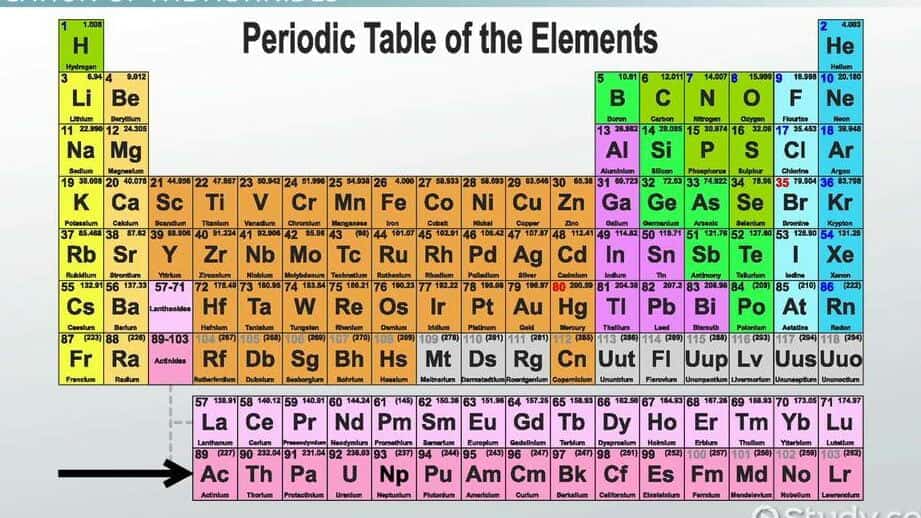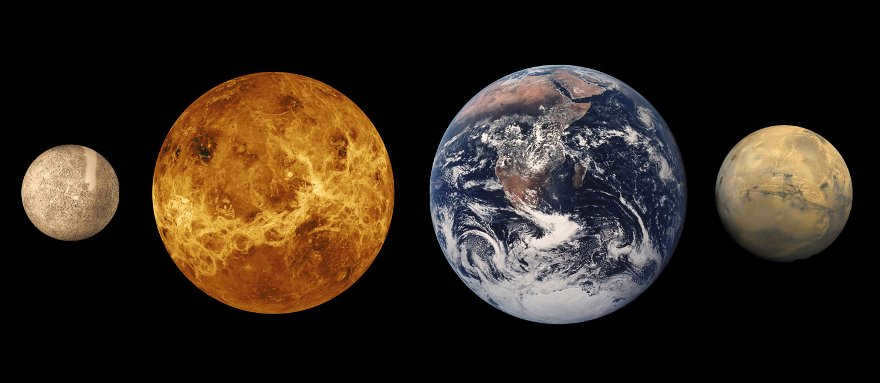
Scientists have been investigating the enormity of the solar system for centuries, observing the various categories of planets. With the discovery of exoplanets, our knowledge has expanded even further. In addition to gas giants, we have come across planets that resemble Earth. What exactly are these Earth-like planets?


Defining Earth-like Planets
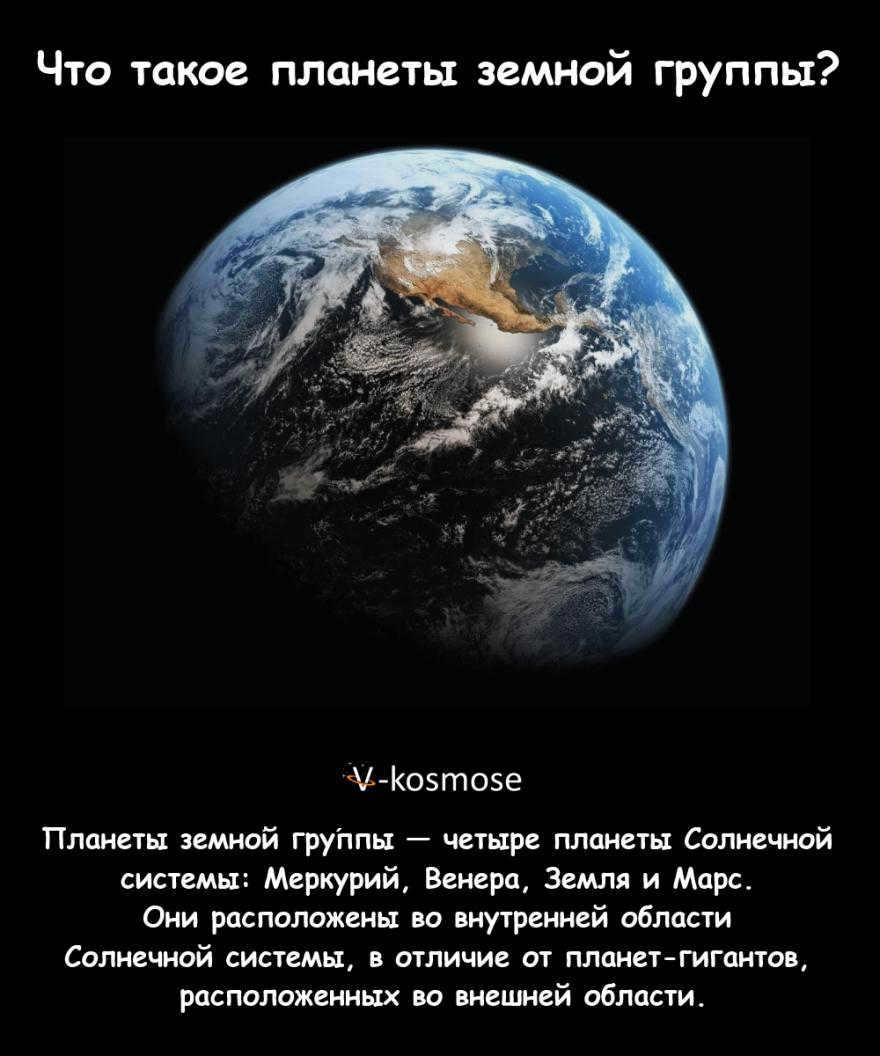
An Earth-like planet is a celestial object composed of silicate rocks or metal and possesses a solid outer layer. This distinguishes it from gas-filled giants. The term is derived from the Latin word “Terra”, which means “Earth”. Presented below is a compilation of the planets that belong to the Earth group.
Planets in the Earth Group
Structure and Characteristics of the Planets in the Earth Group
All of these celestial bodies possess a similar makeup, consisting of a metallic core composed primarily of iron, surrounded by a mantle made up of silicates. The surface of these planets is adorned with various formations such as craters, volcanoes, mountains, and canyons.
Some of these planets also possess secondary atmospheres, which are formed either through volcanic activity or through the arrival of comets. However, not all of them have moons or ring systems. For instance, Earth has the Moon, while Mars has two moons, Phobos and Deimos.
Now, let’s take a closer look at the characteristics of the planets in the Earth group, specifically Mercury, Venus, Earth, and Mars, and observe both their similarities and differences.
An experienced tarot reader will be able to provide answers to your questions.

Key facts about the planets in the Earth group
Mercury, the smallest planet in the solar system, is approximately one-third the size of Earth. It has a thin atmosphere that causes it to experience extreme temperature fluctuations, freezing and heating up. Mercury is known for its high density, which is attributed to its composition of iron and nickel. Its magnetic field is only about 1% as strong as Earth’s. The surface of Mercury is marked by numerous deep craters and a thin layer of silicate particles. In 2012, astronomers discovered traces of organic material on Mercury, which are the fundamental building blocks of life. Additionally, water ice has also been found on the planet.
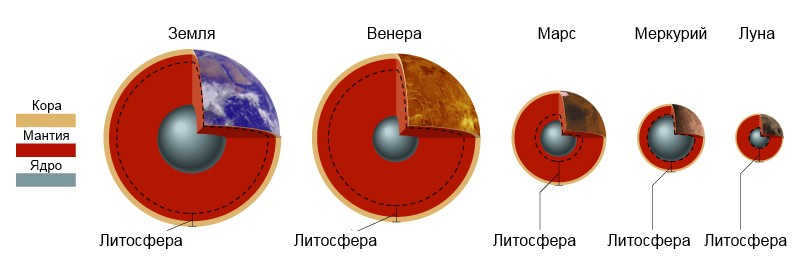
The composition of the planets in the Earth group
Venus, a planet similar in size to Earth, has a dense atmosphere that is rich in carbon monoxide. Due to this characteristic, the planet retains heat and is considered the hottest in our solar system. Venus is known for its active volcanoes and deep canyons that cover most of its surface. Only a handful of spacecraft have successfully landed and operated on the planet’s surface for short periods of time. The intense volcanic activity on Venus prevents meteors from leaving craters, as they are incinerated upon entry and any impact marks are quickly covered by fresh volcanic material.
Earth is the largest of the Earth-group planets and possesses an immense quantity of liquid water, a vital component for the development of life in its various forms. The planet boasts a rocky surface adorned with canyons and highlands, as well as a robust metallic core. Its atmosphere contains water vapor, which serves to moderate the daily temperature fluctuations. Additionally, Earth experiences distinct seasonal changes, with the regions near the equator receiving the highest levels of heat. However, presently, the rates of temperature rise are increasing due to human activity.
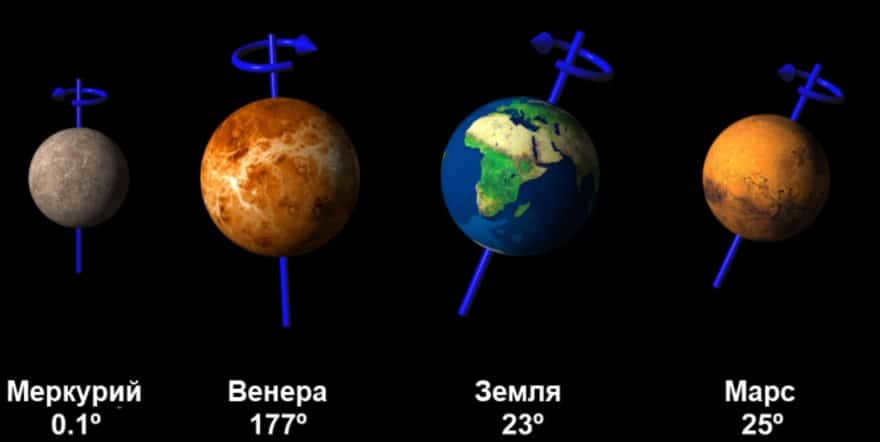
The axial tilt of the terrestrial planets
Mars boasts the tallest mountain in our solar system. The majority of its surface consists of ancient sediments and crater formations, although there are also younger regions. During the summer and spring, the polar caps on Mars shrink in size. Mars is less dense than Earth, with a solid core. While researchers have not yet found definitive evidence of life on Mars, they have discovered numerous clues. Furthermore, the conditions on Mars in the past were conducive to the existence of life. The planet contains water ice, organics, and methane.
It is believed that the appearance of Earth-like planets was the first in the solar system. Initially, dust particles merged together to form larger objects. These objects were located closer to the Sun, causing the volatile substances to vaporize. Over time, these celestial bodies grew to be kilometers in size, becoming planetesimals. They continued to accumulate more dust and material.
Through analysis, it has been determined that there were approximately one hundred protoplanets in the early solar system, ranging in size from the Moon to Mars. These protoplanets constantly collided and merged with one another, resulting in the ejection of debris. In the end, only four major planets from the Earth group survived: Mercury, Venus, Mars, and Earth.
A knowledgeable tarot reader will be able to provide answers to various questions such as:
What does the future hold for you? How will your relationships unfold? What is the best decision to make?

All of these celestial bodies share a common feature – a high density index, with their composition predominantly consisting of silicates and metallic iron. The grandest example among them is our very own planet, Earth, which falls under the category of terrestrial planets. What sets these planets apart is their similar structure, comprising of a core, mantle, and crust. However, it is worth noting that only two of these planets, namely Earth and Mars, are accompanied by natural satellites.
Latest Studies on Earth-Like Planets
Scientists are currently focusing their efforts on investigating Earth-like planets, as they are considered to be the most promising candidates for the presence of extraterrestrial life. This assumption is largely based on the fact that Earth is the only known planet to support life, thus making it the standard for comparison.
There is growing evidence to suggest that life can thrive in extreme conditions. As a result, researchers anticipate the possibility of discovering life on planets such as Mercury and Venus, despite their scorching temperatures. However, the most significant attention is directed towards Mars, which not only has the potential to harbor life but also serves as a potential future settlement.
If all goes as planned, the first group of astronauts could be sent to Mars in the 2030s. Currently, rovers and orbiters are actively exploring the planet in search of water and any indications of life.
Gas giants have been the most commonly discovered exoplanets, as they are relatively easier to detect. However, since 2005, the Kepler mission has enabled us to identify a significant number of terrestrial objects. Interestingly, a majority of the exoplanets discovered have been classified as super-Earths, which are similar to our own planet but significantly larger in size.
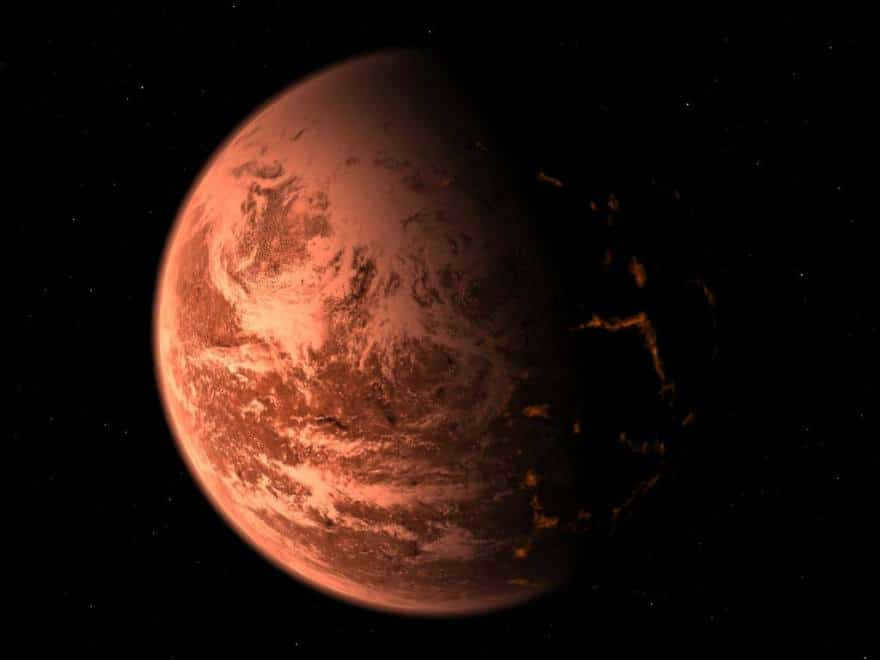
Artistic representation of Gliese 876d
One such exoplanet is Gliese 876d, which has a mass that is 7-9 times greater than that of Earth. It orbits a red dwarf star located 15 light-years away from us. In the Gliese 581 system, three terrestrial exoplanets have been discovered at a distance of 20 light years from our planet.
The smallest of these exoplanets is Gliese 581e. It is only 1.9 times the mass of Earth but is located extremely close to its star. The first confirmed terrestrial exoplanet, Kepler-10b, is 3-4 times the mass of Earth. It is located 460 light years away from us and was discovered in 2011.
Super-Earths
There has been a significant discovery in the field of exoplanets, with a multitude of super-Earths (planets that are larger than Earth but smaller than Neptune) being found. These intriguing celestial bodies do not exist within our own solar system, leaving scientists with many unanswered questions about their appearance and composition.
The scientific community is eagerly anticipating the launch of the James Webb Telescope, which is expected to revolutionize the search for exoplanets and shed light on the mysteries of the cosmos.
Categories of Earth-like planets
There is a classification of Earth-like planets. Silicate planets are common in our solar system and consist of a rocky mantle and a metallic core. Iron planets are a theoretical type made entirely of iron. This results in a higher density but a smaller size. These planets can only form in regions with high temperature levels.
Rocky planets are another theoretical type where there is a silicate rock composition but no metallic core. They are expected to form further away from the star. Carbonaceous planets have a metallic core surrounded by carbon-containing minerals.

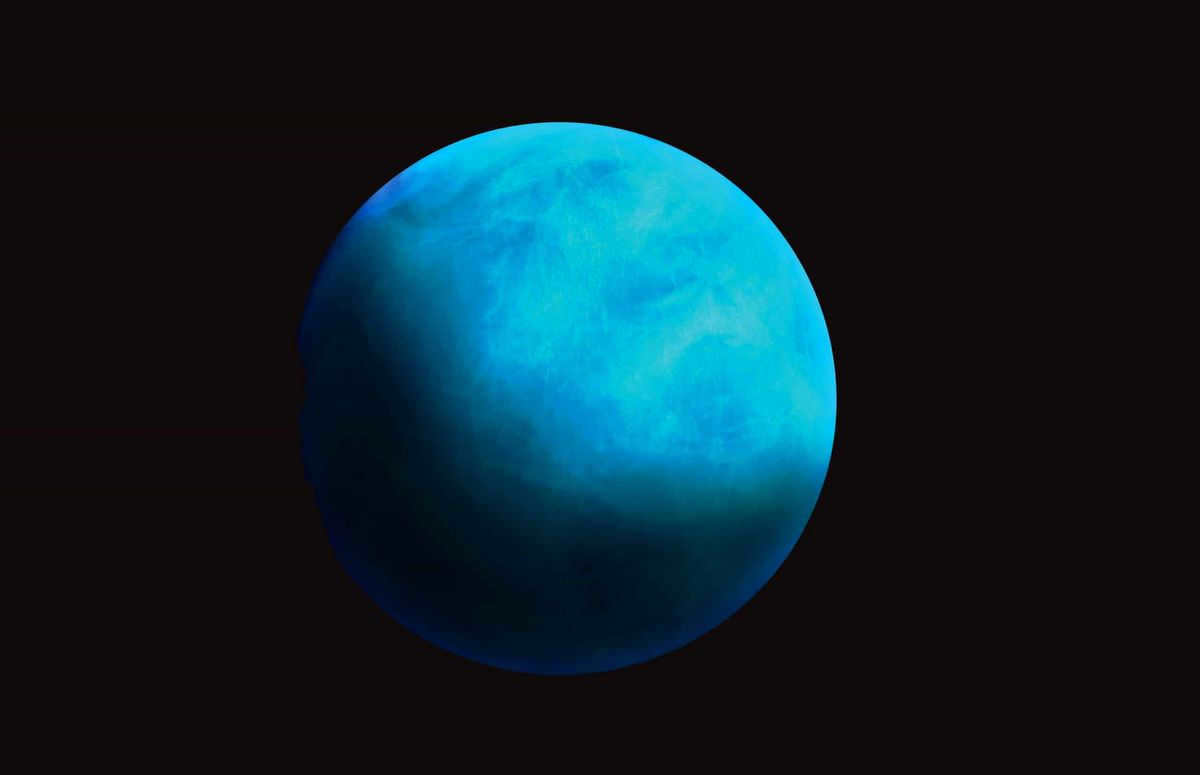
Cosmos
Uranus, the fourth largest planet in the solar system in terms of mass and third largest in terms of diameter, is often referred to as an “ice giant”. It was first discovered in 1781. Despite being visible to the naked eye from Earth, astronomers initially mistook Uranus for a comet and later, a faint star. As a result, the planet has been relatively understudied and continues to pique the curiosity of astrophysicists today. Uranus was named after the Greek god who is also the father of Saturn.
Dimensions, weight, path
The characteristics of Uranus are as follows:
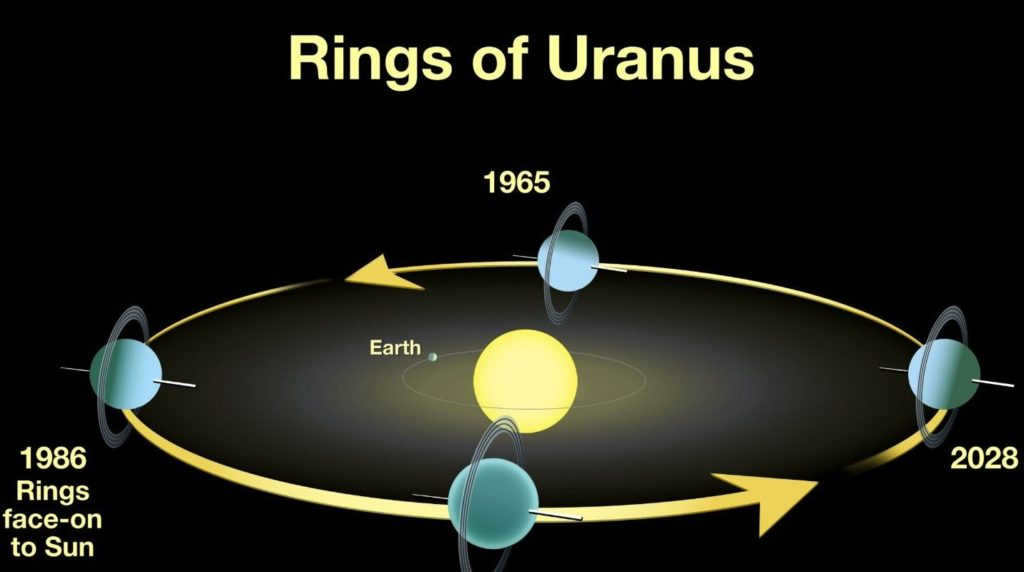
- The weight of Saturn is 14.6 times greater than that of Earth, which is equivalent to 8.683*10^25 kg;
- Saturn has a surface area of 8.1156 billion km2;
- The equatorial radius of Saturn is 25559 km;
- The density of Saturn is 1.27 g/cm3;
- Saturn has an axial tilt of 97.77°;
- The orbital velocity of Saturn is 6.81 km/s;
- The radius at the poles of Saturn is 24973 km.
Uranus is a spheroid with flattened poles. It is the least massive of the gas giants, as the majority of its composition is ice. The gravitational pull is only 10% weaker than that of Earth.
Fascinating fact: Uranus is over 4.5 billion years old and coalesced alongside the rest of the planets.
The planet’s sideways movement is caused by its significant axial tilt. It behaves like a rolling ball, spinning in a clockwise direction. As the planet orbits the Sun, its poles experience daylight for 42 years and enjoy continuous summers, while simultaneously, the other pole endures darkness and extreme cold.
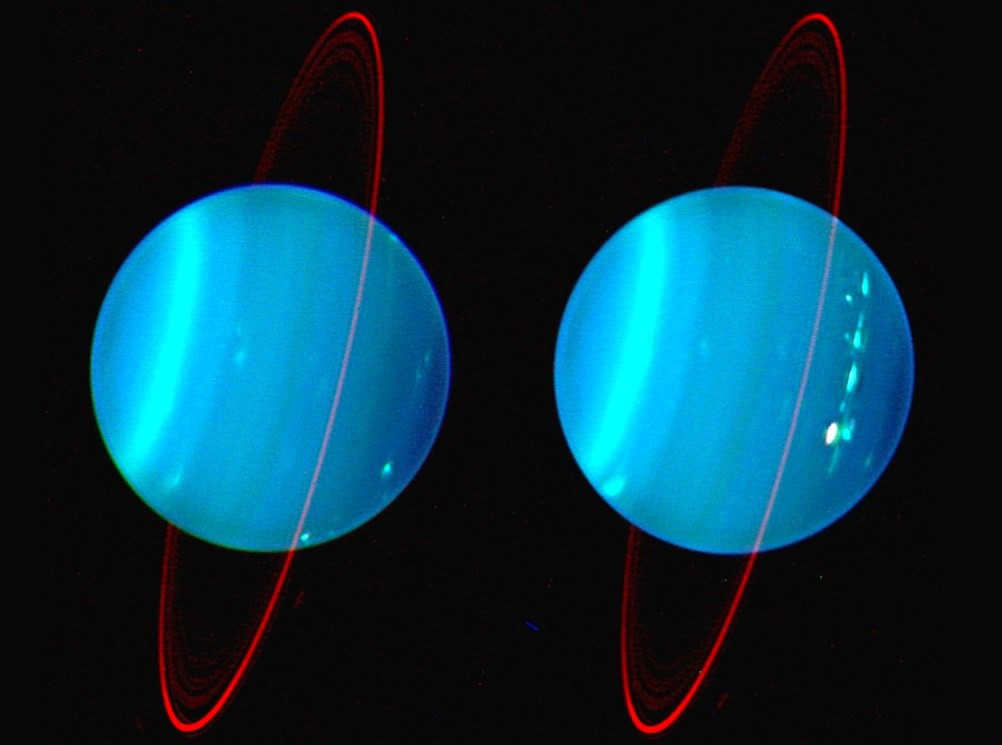
Day and night alternate on Uranus every 17 hours and 14 minutes, which is the time it takes for the planet to complete one revolution around its axis. In addition, Uranus completes a full revolution around the sun every 84 years.
Fascinating fact: Scientists are puzzled as to why the equatorial zones, despite receiving less solar energy, are much warmer than the polar zones, which receive more solar energy due to the axial tilt.
Some astrophysicists propose that the strong tilt of Uranus’ axis is a result of a collision with a large celestial object, which caused the planet to be tilted on its side. Others suggest that a satellite exerted enough gravitational force to disrupt Uranus’ rotation axis, potentially due to its attraction to a larger space object.
It is a challenging task to distinguish between the north and south poles of the blue giant due to the movement of its magnetic field along with the planet. If Earth were to experience similar conditions, its weather patterns would constantly change. However, Uranus has not only two main magnetic poles but also two pairs of weaker poles.
Perceptibility
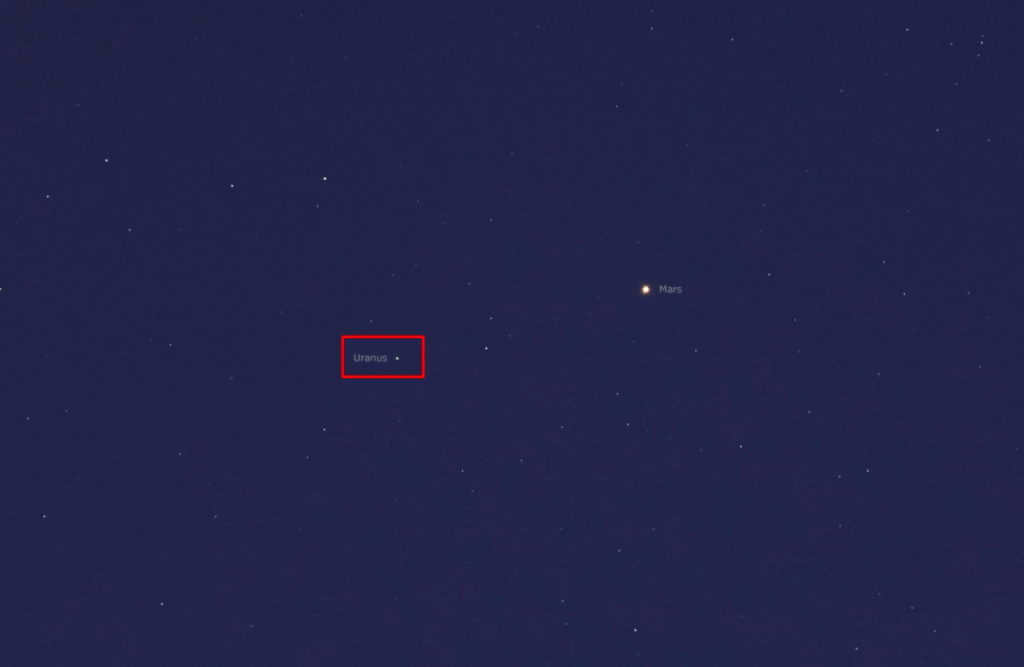
The magnitude of Uranus in the night sky ranges from 5.6m to 5.9m, indicating that it can be visible to the naked eye from Earth if you know its precise location. It appears like a faint star.
However, observing Uranus requires a telescope with a minimum lens size of 250 mm. In a dark sky, you can clearly see its bluish-green disk and two moons, Oberon and Titania. With a more powerful telescope equipped with a 400 mm lens, you can observe dark belts, spots, and areas with various colors. The moons Ariel and Umbriel are also easily visible.
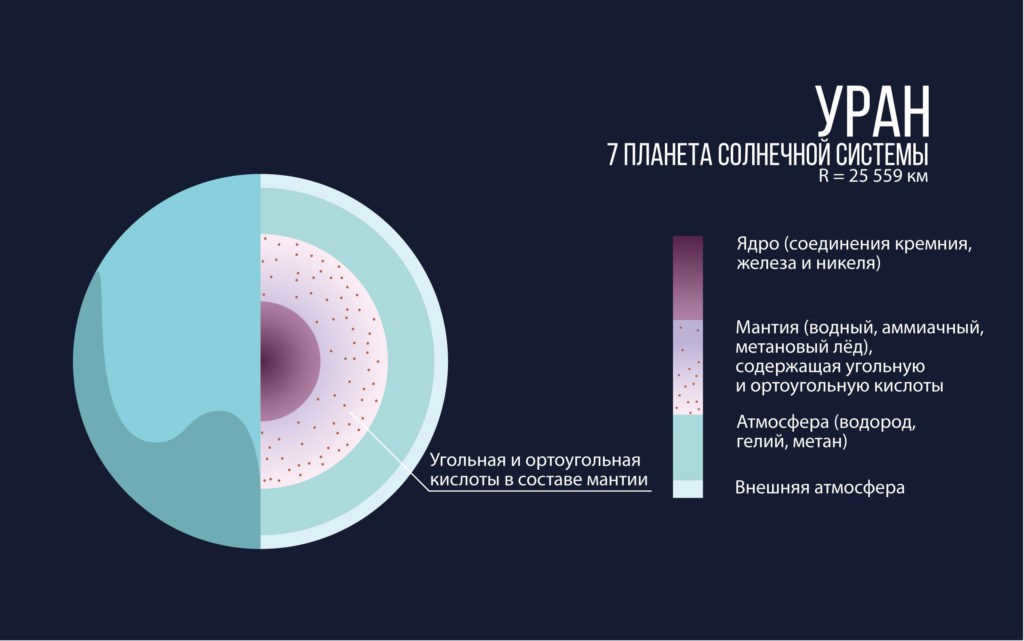
Uranus has a central core made of rock and surrounded by a hot “icy” mantle. The mantle is a combination of water, methane, and ammonia, creating an “ocean of aqueous ammonia.” Unlike other planets, Uranus receives more heat from the Sun than it emits on its own. Scientists have proposed two theories to explain this:
- The planet has lost a significant amount of internal heat generated during its formation due to the impact of a large celestial object.
- There is a barrier that prevents the internal heat from escaping to the planet’s surface.
Here’s an interesting fact: The absence of thermal radiation makes it difficult to determine the temperature inside Uranus. However, if the temperature is similar to that of other gas giants, it is possible that Uranus once supported primitive life.
Using infrared light, it is possible to observe the surrounding clouds of this awe-inspiring and distinct planet.
The Role of Satellites
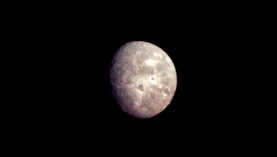
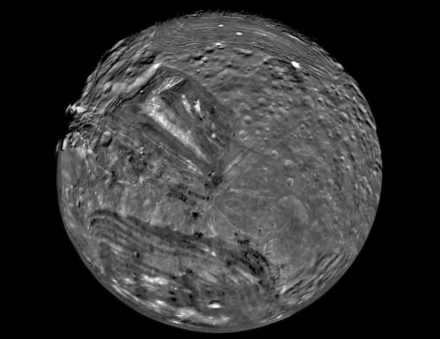
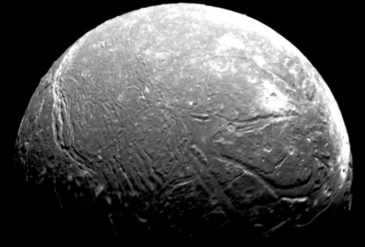
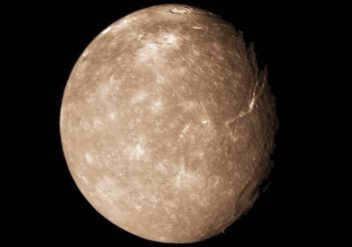
Uranus, the seventh planet from the Sun, is known to have a total of 27 natural satellites. These satellites can be classified into three groups: 13 inner satellites, 5 large satellites, and 9 irregular satellites. Each of these satellites possesses its own unique characteristics and features.
The first two satellites of Uranus, namely Titania and Oberon, were initially discovered by the astronomer Herschel back in 1787. Just two years later, the British astronomer Lassel made the discovery of two more satellites, Ariel and Umbriel. In 1948, the American astronomer Kuiper added another satellite, Miranda, to the list. The Voyager 2 probe, which explored Uranus in 1986, was able to identify 11 additional satellites. The most recent satellite to be discovered was the irregular satellite named Margarita.
Out of the 27 satellites, there are five major natural moons that are particularly notable. These moons are quite massive in size. For instance, Titania has a diameter of 1,578 kilometers. However, when combined, the total mass of these five major moons is still less than that of Triton, one of Neptune’s moons. It is worth noting that Titania’s surface exhibits signs of past volcanic activity. In fact, there are winding valleys on Titania that resemble riverbeds, some of which can stretch up to 1000 kilometers in length.
The composition of Uranus’ atmosphere includes hydrogen, helium, ammonia, and methane, which gives it a distinctive blue glow. The atmosphere is divided into three layers based on altitude: the troposphere (up to 50 km), the stratosphere (from 50 km to 4000 km), and the thermosphere (from 4000 km to 50,000 km).
Within the troposphere, there are numerous clouds with a layered structure. The lower level consists of ice, while the upper level is composed of methane. This layered cloud structure contributes to the unique appearance of Uranus.
Uranus holds the record for being the coldest planet in our solar system. Surface temperatures can plummet to -224 °C, making it an extremely frigid and inhospitable environment.
Fun fact: The temperature in the thermosphere can reach up to 577 °C, which is a phenomenon that scientists have yet to explain. Despite the large distance from the Sun, the internal heat remains relatively small.
In the equatorial regions, the wind direction is opposite to the rotation of the planet. As you move farther away from the equator, the speed of the currents becomes stronger. In massive vortices, it can reach speeds of up to 900 km/h. However, as you get closer to the poles, the wind direction changes and its speed rapidly decreases.
Changes in the seasons
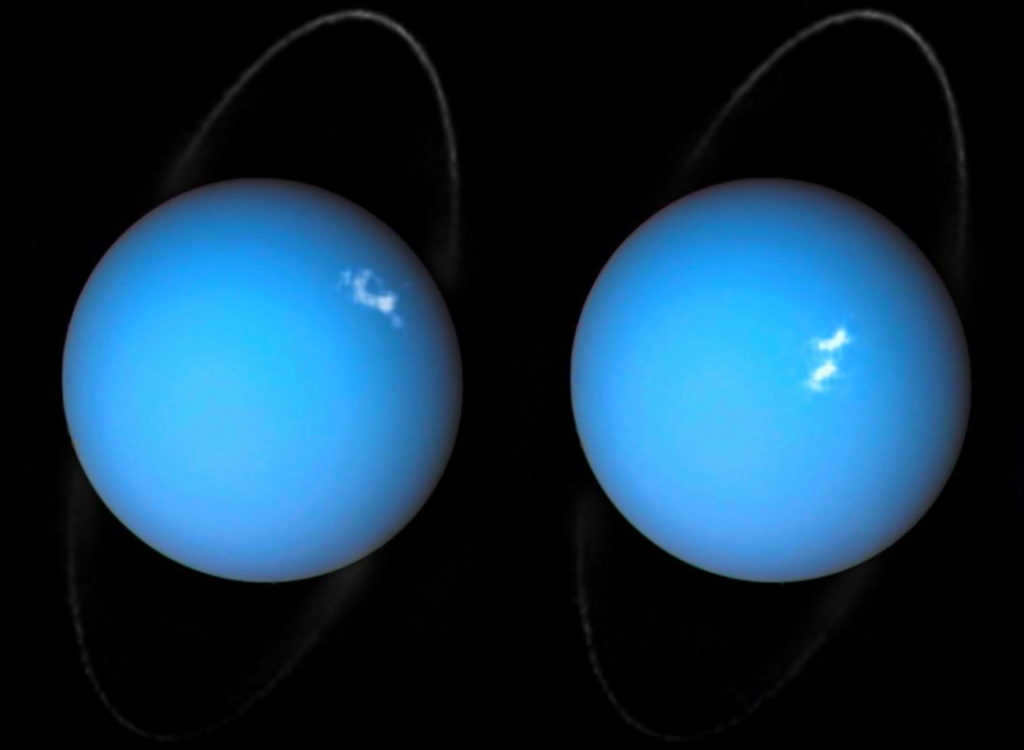
In 1986, Voyager 2 captured images of Uranus up close, revealing a seemingly calm and unremarkable planet without any atmospheric storms. However, with the help of modern and powerful telescopes, scientists have since been able to observe and identify seasonal weather changes on Uranus.
The unique axial tilt of Uranus plays a significant role in these unusual seasonal shifts. One pole experiences 42 years of continuous sunlight, while the other pole endures a dark and frosty winter with strong winds throughout the entire period.
Despite ongoing research, the exact mechanisms behind the changing seasons on Uranus remain poorly understood. In 2004, a notable weather event occurred, with the emergence of numerous clouds, an increase in wind speeds up to 824 km/h, and the onset of severe thunderstorms that lasted until July 4th. Additionally, in 2006, the initial stages of an atmospheric vortex formation were successfully captured in photographs.
There are certain instances where clouds can suddenly vanish on a particular planet within a matter of hours after first appearing. Conversely, there are others that remain unchanged for an extended period of time, sometimes even decades. In the case of Uranus, this planet experiences four distinct and “extreme” seasons:
- southern solstice;
- the northern spring;
- the equinox season;
- the northern solstice.
During the approach to the solstice, both the southern and northern hemispheres of Uranus find themselves in identical conditions, either being illuminated by the Sun or enveloped in the darkness of space.
Ring Collection
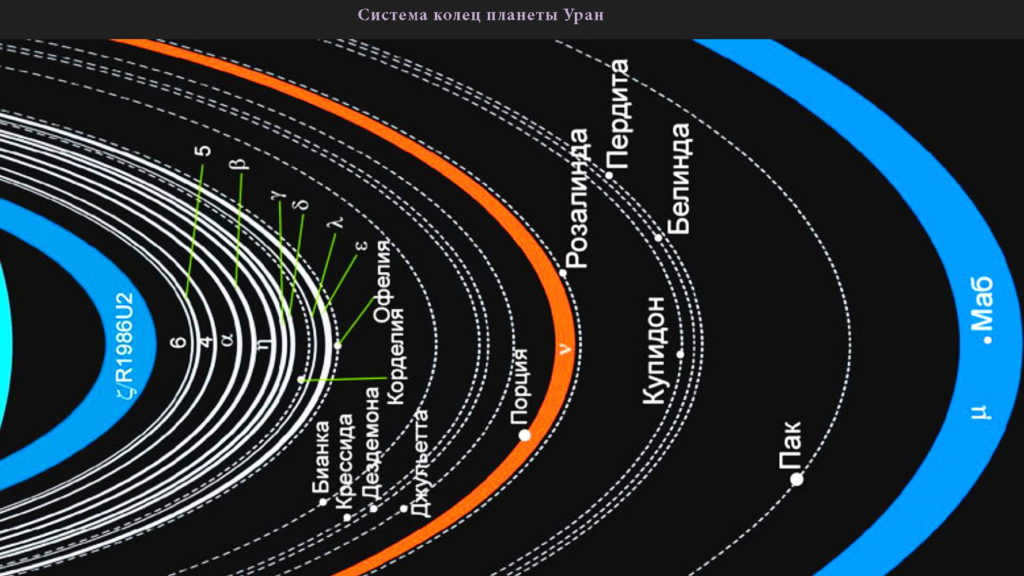
The rings of Uranus were initially observed by W. Herschel in 1789. However, his findings were dismissed as an error by the scientific community and remained unexplored for the next 200 years. It was only in 1977 that American astronomers confirmed the existence of nine rings around Uranus. Further discoveries were made using the Hubble telescope, revealing four additional rings.
Presently, it is understood that the ring system consists of 13 primary rings, along with numerous faint dust bands. These rings appear reddish in ultraviolet light and gray in infrared radiation. Their dark hues indicate a composition of ice and an unknown substance, possibly similar to the inner satellites of Uranus. It is believed that the rings formed long after the planet itself.
Physical attributes
Uranus possesses a volume that is 63 times greater than that of Earth, while its mass is a mere 14 times larger. These figures indicate that the planet is primarily comprised of water. According to one hypothesis, Uranus features a rocky core that surpasses the size of Earth, while an alternate hypothesis asserts that no such core exists and instead the planet is composed of a mixture of snow and gas.
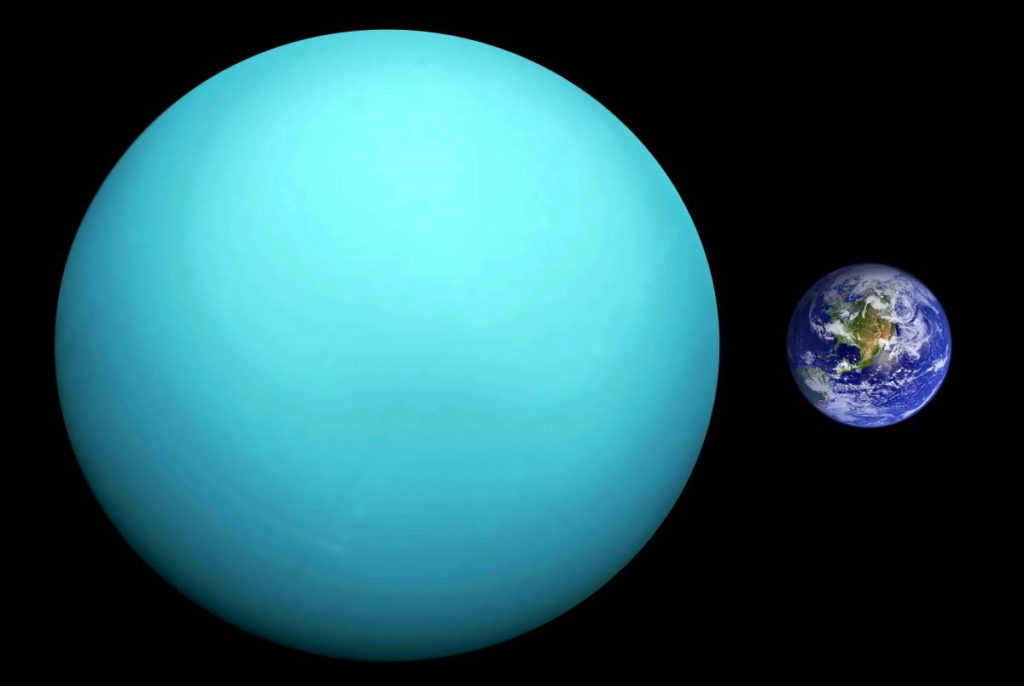
Unlike Earth, Uranus does not have a solid surface. Instead, scientists define its upper boundary as a rotating spheroid with a pressure of one bar. This is where the different atmospheric layers of the planet begin.
The Creation of Uranus
The protosolar nebula, a vast rotating mass of gas and dust, played a crucial role in the formation of our solar system. Through compaction, this nebula gave birth to the Sun, with hydrogen and helium serving as its building blocks, while dust particles came together to form protoplanets.
Over time, these protoplanets grew in size and developed gravitational fields that attracted and retained residual gas in their vicinity.
While this theory of celestial body formation satisfies scientists, it still leaves many questions unanswered regarding the genesis of gas giants like Uranus and Neptune.
A fascinating tidbit: Some researchers propose that Uranus had a different orbit in the past, one that brought it relatively close to the Sun.
The accumulation process of Uranus occurred at a sluggish pace, which ultimately hindered its ability to amass a sufficient amount of gas mass. Consequently, it possesses a scarcity of both helium and hydrogen. As a consequence of these conditions, Uranus is categorized as an ice giant.
What is the duration of a journey to Uranus?
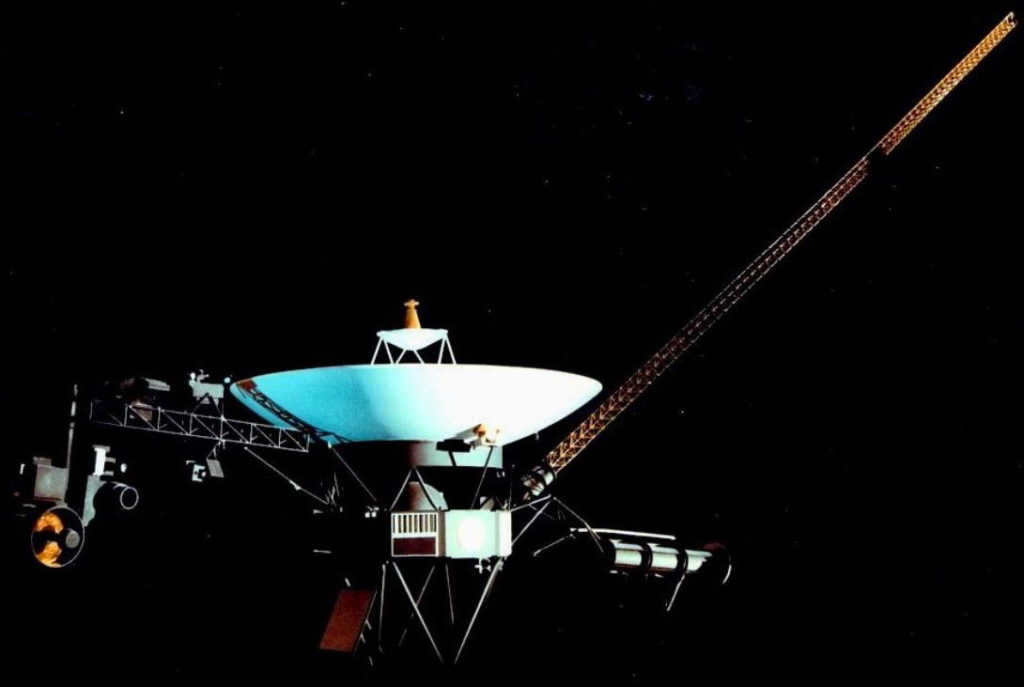
Due to its extreme physical characteristics, it will remain impossible for humans to visit Uranus in the foreseeable future. However, scientists have managed to calculate the approximate time it would take to reach the blue giant. The Voyager 2 probe, which was launched from Earth in 1977, successfully reached Uranus after a journey of 8.5 years. During its mission, the probe maintained a speed of 15.4 kilometers per second.
In a hypothetical scenario, here are the estimated travel times to Uranus using various modes of transportation:
- By bicycle: approximately 15,000 years
- By Boeing aircraft: around 326 years
- By an An-2 airplane: roughly 1,500 years
- At the speed of light: a mere 2 hours and 40 minutes
Gravity
Despite its large dimensions, Uranus has a remarkably low density of only 1.27 g/cm3, which directly affects its gravitational force. As a result, the gravity on Uranus is slightly weaker than that on Earth, measuring at 8.69 m/s2.
Uranus experiences internal heating, leading to atmospheric thunderstorms, strong winds, and the presence of chemical elements that contribute to the formation of basic organic compounds. Additionally, the planet’s core is surrounded by a liquid ocean, with water being one of its components.
However, the immense pressure on Uranus’s surface makes it inhospitable for any known form of life. With its frigid temperature of -220 °C, Uranus is considered the coldest region in the entire solar system, potentially hosting extraterrestrial organisms.
Another reason why life cannot exist on Uranus is the lack of sufficient solar energy caused by the significant distance between the planet and the sun.
Distance from the sun
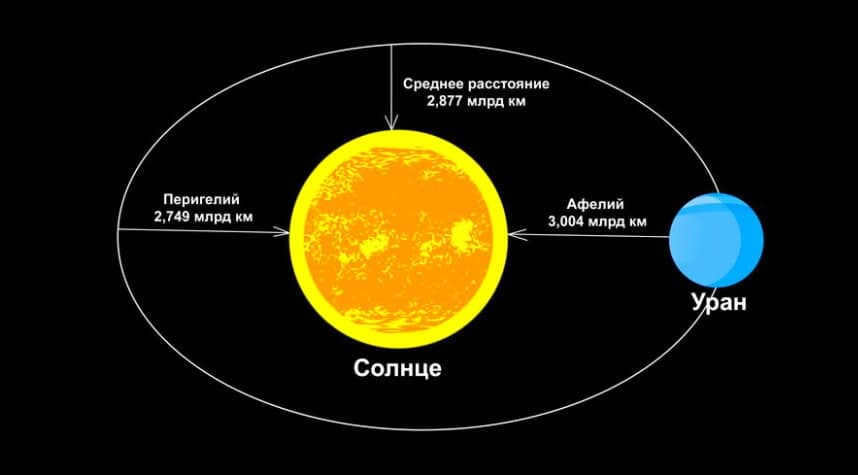
The time it takes for sunlight to reach the Earth’s surface is 8 minutes. In contrast, it takes approximately 2.7 hours for sunlight to reach the distant planet Uranus. Uranus is located at an average distance of 2.88 billion kilometers from the Sun, which is equivalent to 19.2 astronomical units. This average distance is equivalent to 2.88 billion kilometers.
On Uranus, a full day lasts for 17 hours, 14 minutes, and 24 seconds. During this time, the planet completes one rotation around its axis. However, due to its significant tilt, Uranus is essentially lying on its side. As a result, one hemisphere is constantly exposed to the Sun, while the other remains in shadow.
Uranus Distance
Because of the continuous movement of planets in their orbits, the distance between them is always changing. The closest approach between Uranus and other planets occurs during the “parade of planets.”
The distance from Earth to Uranus ranges from 2.6 to 3.1 billion kilometers.
Planet’s Discovery
The initial sighting of Uranus is accredited to William Herschel, a musician hailing from London, who had an ardor for the field of astronomy. Utilizing his own handcrafted telescope, Herschel would spend countless nights observing the celestial bodies. His ultimate aspiration was to meticulously chart the stars in the Northern Hemisphere. It was on the fateful night of March 13, 1781, that his focus was captured by an anomalous star, which bore a striking resemblance to a disk. Initially, Herschel presumed it to be a comet. However, further investigation revealed that it possessed a circular orbit, thus eliminating the possibility of it being a comet.

William Herschel secured his future with the find of Uranus. His talent for observing the celestial bodies caught the attention of King George III, who recognized his skill and appointed him as an astronomer with a generous annual salary of 200 pounds.
Study Background
The composition and size of Uranus have been inferred through indirect evidence. When observed from a distance, the planet appears as a massive sphere with a blue-green hue, largely due to the presence of methane. If it were possible to descend beneath the atmosphere, one would encounter a dense and increasingly hot mass. The pressure and temperature at these depths are so extreme that the gaseous matter transforms into a liquid state. Any scientific probe sent into this environment would instantaneously vaporize.
For centuries, there was a lack of knowledge about Uranus, until scientists were able to gather information about this enigmatic planet through the use of a space probe. In August 1977, the spacecraft “Voyager 2” was launched from Cape Canaveral with the purpose of exploring the most distant planets, including Uranus. The closest encounter took place in January 1986, when the spacecraft came within 81.5 thousand kilometers of the ice giant. During this mission, thousands of unprecedented images were transmitted back to Earth, allowing scientists to make new discoveries about Uranus, such as the identification of previously unknown satellites and rings, and the determination of the strength and location of its magnetic fields.
To optimize the duration of the journey to Uranus, it is essential to leverage the gravitational pull of adjacent planets. This is precisely how the Voyager 2 spacecraft gained acceleration from Jupiter and Saturn. The most challenging and crucial aspect is to accurately calculate the timing and deceleration force of the probe. Any miscalculation could result in the probe simply bypassing its intended destination.
In the year 2030, Jupiter will be positioned exceptionally well to provide the necessary acceleration for a novel probe that can swiftly reach Uranus. The space community has a decade to meticulously prepare for a new and more comprehensive exploration of these remote planets.
Fascinating video on Uranus
If you come across any mistakes, kindly mark the text and press Ctrl+Enter.
The Jupiter group consists of massive gaseous planets (Jupiter, Uranus, Saturn, Neptune) that possess a considerable thermal reservoir within their core. These planets can be further categorized based on the composition of their gaseous layers, with Uranus and Neptune being peripheral planets characterized by predominantly watery shells, while Jupiter and Saturn, located closer to the center of the Solar System, have gas compositions that closely resemble that of the Sun.
Jupiter is the largest planet in the Solar System and is positioned as the fifth most distant planet from the Sun. With its golden ball appearance, Jupiter is slightly flattened at the poles. Compared to Earth, Jupiter is located 5.2 times farther away from the Sun and takes approximately 12 years to complete one orbit. The equatorial diameter of Jupiter measures 142,600 kilometers, which is 11 times the diameter of Earth. Jupiter rotates around its axis in the equatorial region in 9 hours and 50 minutes, while near the poles it takes 9 hours and 55 minutes.
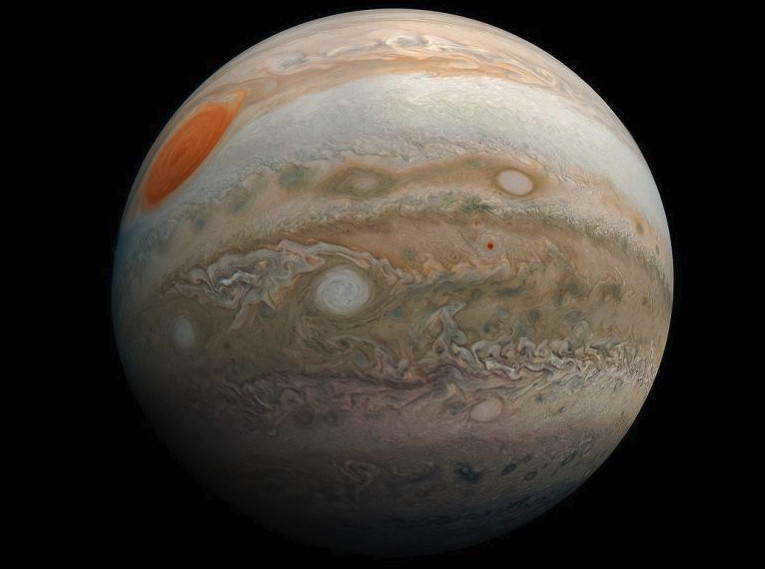
Therefore, Uranus, similar to the Sun, does not rotate as a solid object due to variations in rotation speed across different latitudes. The rapid rotation results in significant compression at the poles. Uranus has a mass equivalent to 318 times that of Earth, and its average density closely resembles the density of the Sun at 1.33 g/cm3.
Uranus’s axis of rotation is nearly perpendicular to its orbital plane, with an inclination of 87°. The planet’s gaseous atmosphere is primarily composed of hydrogen (74%) and helium (26%), along with traces of methane (0.1%), ethane, acetylene, phosphene, and water vapor. The atmospheric layer extends approximately 1000 km in thickness.
The surface of Jupiter is constantly changing due to the rapid movements in the layer of clouds that envelop the planet. These movements are responsible for transferring large amounts of energy. The clouds of Jupiter are composed of crystals and droplets of ammonia.
One of the most remarkable features of Jupiter is the Great Red Spot, which has been observed for more than 300 years. This enormous oval formation measures approximately 35000 x 14000 km and is located between the Southern Tropical and Southern Temperate bands. While its color is predominantly red, it undergoes changes over time. The Great Red Spot is believed to be sustained by convective cells that transport matter and internal heat from the planet’s interior to its visible surface.
In 1956, scientists detected Jupiter’s radio emission at a wavelength of 3 cm, indicating thermal radiation with a temperature of 145 K. Infrared measurements have shown that the outer clouds of Jupiter have a temperature of 130 K. It has been conclusively proven that Jupiter emits more heat than it receives from the Sun, with the heat output being more than twice the thermal energy input. One possible explanation for this phenomenon is that Jupiter is undergoing a constant process of contraction, shrinking at a rate of 1 mm per year.
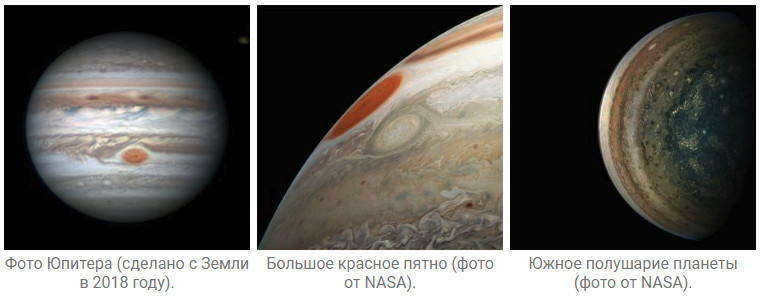
Jupiter has a total of 15 satellites. The first four satellites, namely Io, Europa, Ganymede, and Callisto, were discovered by Galileo. These satellites, along with the inner satellite Amalthea, mostly move in the same plane as the planet’s equator. In terms of size, both Io and Europa are comparable to the Moon, while Ganymede and Callisto are larger than Mercury but have less mass.
The outer satellites of Jupiter, on the other hand, orbit the planet along highly elongated orbits with significant angles of inclination to the equator, reaching up to 30 degrees. These satellites are relatively small in size, ranging from 10 to 120 km, and have irregular shapes. Interestingly, Jupiter’s four outer satellites revolve around the planet in the opposite direction. Surrounding the equatorial region of Jupiter is a system of rings, located approximately 50,000 km from the planet’s surface and having a width of around 1,000 km.
Saturn
Saturn is the second largest planet in the Solar System, but it is relatively light, with an average density of 0.69 g/cm3. Its low density can be attributed to the fact that it is primarily composed of hydrogen and helium, similar to other gas giant planets. Unlike Jupiter, however, Saturn does not experience as much pressure in its depths, resulting in a lower density of matter. Additionally, like Jupiter, Saturn has a rapid rotation period of approximately 10 hours, which causes it to have a noticeable oblate shape.
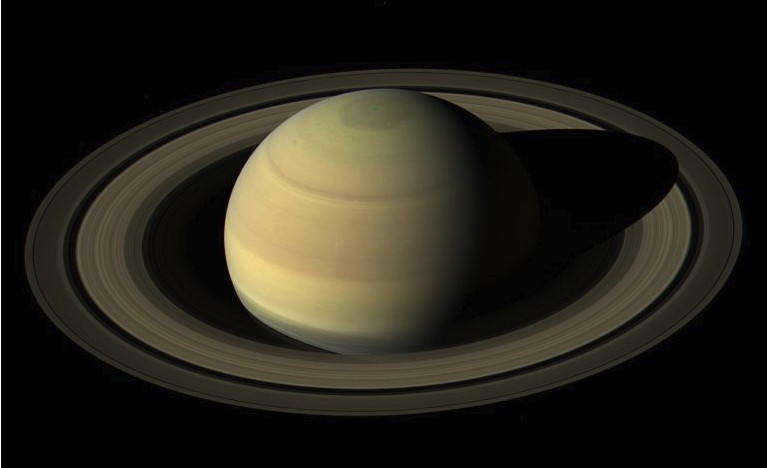
Research using spectroscopy has detected certain molecules within the atmosphere of Saturn. The planet possesses a significant amount of thermal energy within its interior, which it emits at a rate 2.5 times greater than it receives from the Sun. The temperature of the clouds on Saturn’s surface is near the freezing point of methane (-184 °C), suggesting that solid particles of this compound likely exist within the planet’s cloud layer.
The composition of Saturn’s atmosphere is similar to Jupiter’s helium-hydrogen atmosphere, although it contains more methane and less ammonia. When observed through a telescope, Saturn displays dark belts and light zones that stretch along its equator, although they are less pronounced than those on Jupiter. Individual white and red spots are also less frequently observed on Saturn. Additionally, Saturn possesses a strong magnetic field that is almost aligned with its axis of rotation. The planet is composed of a central core, approximately the same size as Earth, consisting of iron and stone in a liquid state. This core is surrounded by a fluid shell comprised of hydrogen, helium, methane, ammonia, and water.
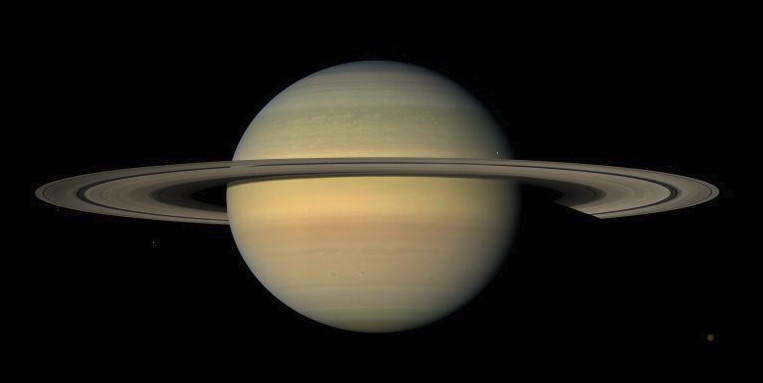
The rings encircling Saturn are among the most fascinating and captivating features found in our solar system. These rings form a flat structure that wraps around the planet’s equator, never making contact with its surface. The rings can be divided into three main concentric regions, which are separated by narrow gaps: the outer ring A (with a diameter of approximately 275,000 kilometers), the middle ring B (which is the brightest), and the inner ring C, which is relatively transparent. The innermost parts of the inner ring, which are barely visible, are designated by the symbol D. Additionally, scientists have recently discovered the presence of another outer ring that is almost transparent. These rings rotate around Saturn, with the inner layers moving at a faster speed than the outer layers.
Saturn’s rings are a flat system consisting of numerous small satellites orbiting the planet. Saturn has a total of 17 known satellites. Among them, Titan stands out as the largest satellite, both in terms of size and mass, making it one of the largest in the entire solar system. Another noteworthy satellite is Janus, which is the closest to Saturn, positioned in close proximity to the planet. On the other hand, Theba exhibits a rather significant eccentricity in its orbit, rotating in the opposite direction.
Uranus
Uranus is the seventh furthest planet from the Sun, with a diameter almost four times greater (having a radius of 25,650 km) than Earth. Uranus is situated at a significant distance from the Sun, resulting in relatively low levels of illumination. The average density of Uranus (1.58 g/cm3) is slightly higher than that of Saturn and Jupiter, even though the matter within the core of these gas giants is significantly more compressed compared to Uranus. Spectroscopic observations have revealed the presence of hydrogen and a small amount of methane in the atmosphere of Uranus, along with a relatively large quantity of helium. It can be inferred that Uranus, like other gas giants, has a similar composition extending towards its core.
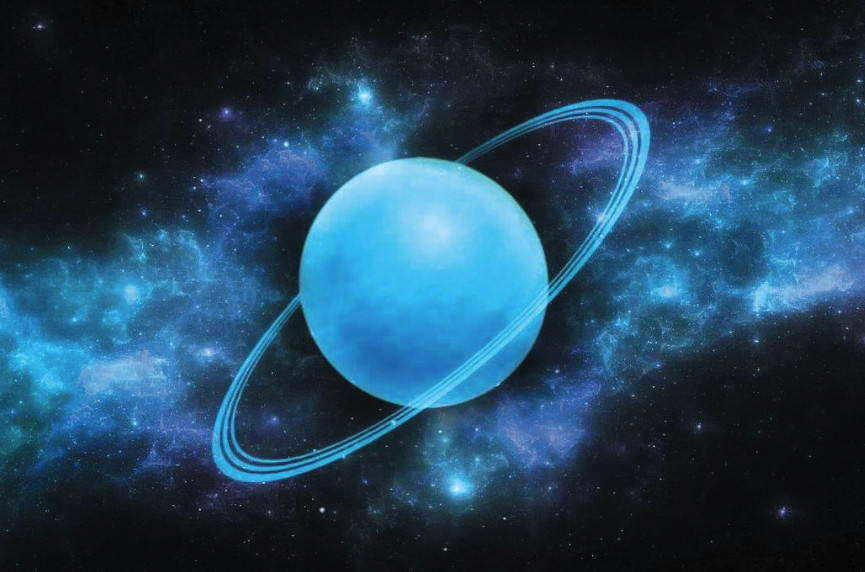
Uranus remains inadequately researched because of its small angular size within the telescope’s field of view, making it challenging to observe. Consequently, studying the planet’s rotation patterns is also impractical. However, it is evident that Uranus, unlike other planets, exhibits an axial tilt, appearing as if it is lying on its side. This tilt creates unique lighting conditions, with the sun’s rays nearly perpendicular to the poles during a specific season. As a result, polar day and night cycle across the entire surface of the planet, except for a narrow strip along the equator.
The size of the iron-rock core of Uranus is larger (approximately 8000 km) compared to the Earth-group planets. Additionally, Uranus has a magnetic field that is larger than Earth’s.
One unique characteristic of Uranus is its ring system, which is 1.6 to 1.85 times the radius of Uranus. These rings appear narrow and thread-like, composed of numerous individual dark particles. Surrounding the rings is a radiation belt system filled with high-energy particles, similar to Earth’s radiation belts but with significantly higher radiation levels.
Uranus has six satellites that orbit in closely aligned planes. The entire system is notable for its extraordinary inclination, with its plane almost perpendicular to the midplane of all other planetary orbits.
Neptune
Neptune is the eighth planet in the Solar System and is similar to Uranus, although it has a slightly larger mass and a slightly smaller radius. The average distance from the Sun to Neptune is 450000000000000000 km, and it takes Neptune 164 years and 288 days to complete one orbit around the Sun. The equatorial diameter of Neptune is 50200 km, and its average density is 2.30 g/cm 3 .
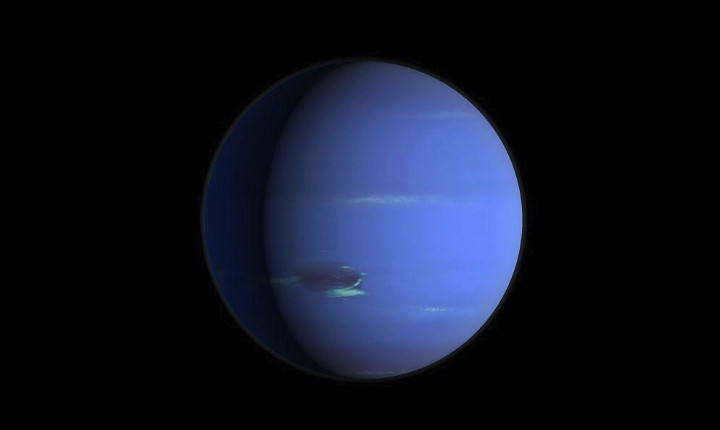
The characteristics of Neptune are typical for giant planets, which are primarily composed of hydrogen and helium with traces of other chemical elements. Neptune possesses a dense core consisting of silicates, metals, and other elements found on Earth. The planet’s atmosphere, primarily composed of hydrogen, helium, and methane, is mostly fluid in nature.
Neptune’s magnetic field is exceptionally strong and, similar to Uranus, is tilted approximately 50° to the planet’s rotation axis. Additionally, the magnetic field is offset from the planet’s center by around 10,000 km. In contrast to the tranquil, icy surface of Uranus, Neptune’s surface is characterized by powerful winds that generate storms through the release of gases from the planet’s interior. Observing the details of Neptune’s surface is a challenging task.
Neptune is home to a pair of moons, with each one possessing unique characteristics. The larger of the two, Triton, is actually larger in both size and mass when compared to Earth’s moon. What makes Triton truly fascinating is its reverse direction of orbital motion, which sets it apart from most other celestial bodies. On the other hand, the second moon, Nereid, is much smaller in size, but its orbit is quite elongated. In fact, the distance between Nereid and Neptune can range anywhere from 1,500,000 to 9,600,000 kilometers. Despite their differences, both moons exhibit a clear and consistent direction of orbital motion.
Pluto
Pluto, the distant celestial body, is considered to be the ninth planet in our Solar System, situated at the farthest point from the Sun, approximately 39.5 astronomical units away. With a remarkably slow orbital period of 247.7 years, Pluto’s path around the Sun showcases an extraordinary inclination of 17 degrees to the ecliptic plane. Furthermore, its elliptical orbit is so elongated that during its closest approach to the Sun (perihelion), Pluto actually comes closer to our star than Neptune does.
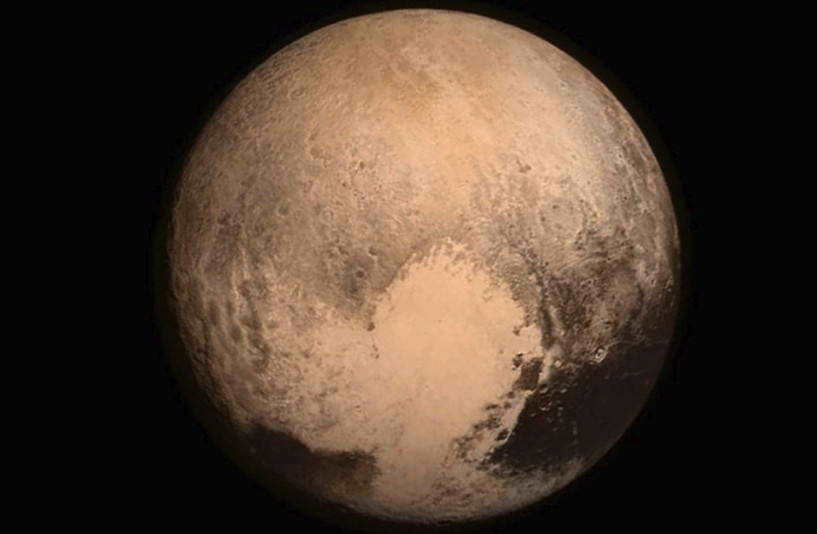
Studying Pluto is a challenging task due to its significant distance from the Sun and its dim illumination. With a diameter of approximately 3,000 kilometers, Pluto’s surface is exposed to extreme temperatures, reaching as low as -220 ° C. Even in the relatively warmer midday regions, the surface seems to be coated with frozen methane snow.
The composition of the planet’s atmosphere is thin and consists mainly of methane gas, with possibly some noble gases mixed in. Pluto’s brightness changes as it rotates, completing a full rotation every 6 days and 9 hours. More recently, it has been discovered that this same rotation period is also the orbital period of Pluto’s moon, Charon. Charon is relatively bright, but it is positioned so close to Pluto that its appearance in photographs blends with Pluto’s, creating the illusion of a “bump” on the planet. Like Pluto, Charon is composed of a combination of icy and dusty material, similar to a comet.
We have successfully determined the mass of the Pluto-Charon system to be 1.7% of the Earth’s mass. The majority of this mass is concentrated in Pluto, as the satellite’s diameter appears to be small compared to that of the planet. Pluto has an average density ranging from 0.7 to 1.12 g/cm3. This low density suggests that Pluto is primarily composed of light chemical elements and compounds, similar to the composition of the giant planets and their satellites.
Unveiling the mysteries of the seventh planet – an in-depth look at Uranus.
Description: Astronomy has always captivated the human mind with its enigmatic nature. This article delves into the fascinating world of Uranus, covering its history of discovery, the origin of its name, its rings, position in the solar system, composition and structure, as well as its orbital rotation.
Several of the findings pertaining to our Solar System, such as the arrangement and quantity of planets it contains, were made during the Modern era, a time when the required tools for such investigations became accessible. Among the more recent discoveries is the planet Uranus, which we will now delve into further.
The story of its discovery
There were numerous options for the name of the fresh celestial object. Initially, Herschel named the planet “Georgium Sidus” in tribute to George III, but this name was only used in England for a little over fifty years. By 1823, the planet was informally referred to as Uranus. In 1850, this name became universally recognized and established in catalogs.
Uranus is unique among the planets as its name is derived from Greek mythology.
Position
Uranus, the 7th planet in our solar system, is classified as a gas giant and is located beyond the asteroid belt, positioned between Saturn and Neptune. With a mass 14.5 times that of Earth and a diameter 3.9 times that of Earth, Uranus is a significantly larger planet. Interestingly, despite its massive size, Uranus has a relatively low density of 1.27 g/cm3, second only to Saturn. It is worth noting that Uranus is the 3rd largest planet in terms of size and the 4th largest planet in terms of mass.
Composition and structure
The composition and structure of a substance refer to its chemical makeup and the arrangement of its atoms or molecules. This information is important for understanding the properties and behavior of the substance. By studying the composition and structure, scientists can determine the elements present in a substance and how they are bonded together. This knowledge can be used to predict the substance’s physical and chemical properties, as well as its reactivity with other substances. Additionally, the composition and structure can influence the substance’s appearance, such as its color or crystal structure. Overall, understanding the composition and structure of a substance is essential for comprehending its properties and how it interacts with its surroundings.
Scientists currently have differing opinions on the composition of Uranus. However, all models agree that the planet is predominantly made up of various forms of ice.
The core of Uranus is relatively small, occupying only 20% of the planet. It has an average surface temperature of -224 degrees Celsius, making it the coldest planet in the solar system. The core has a low heat outflow, which is believed to be a result of a catastrophic event during the early stages of Uranus’ formation.
According to scientists, the interior of Uranus is a combination of ice and rocks.
The largest portion of the planet, comprising 60%, is the mantle. This region is often compared to an ocean of aqueous ammonia, but it also contains methane and water. This is what gives Uranus its “icy” appearance.
The atmosphere of Uranus is composed of hydrogen, helium, methane, and other hydrocarbons. The clouds in the atmosphere consist of solid ammonia or hydrogen, contributing to the planet’s layered structure. The upper layers are primarily made up of methane, while the lower layers are composed of water.
On Uranus, hurricane-force winds of 240-900 m/s are known to blow.
Rings and Moons
There are a total of 13 rings around Uranus. The first 9 rings have been observed and studied using telescopes. Two additional rings were discovered by the Voyager 2 spacecraft, while the Hubble telescope identified two more rings located farthest from the planet.
Uranus also has 27 satellites or moons that orbit around it. The largest moons are named Miranda, Ariel, Umbriel, Titania, and Oberon. These names were inspired by the works of W. Shakespeare and A. Pope. Interestingly, these moons bear resemblance to Uranus in terms of their structure and composition.
Uranus remains a mysterious planet for scientists due to its remote location. Conducting research on this celestial body is challenging, which adds to the enigma surrounding Uranus.
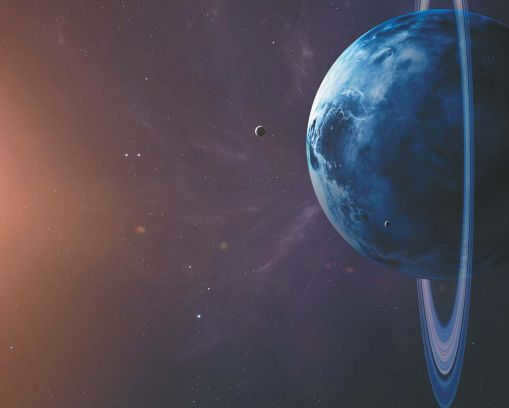
Similar to Venus, Uranus orbits in a counterclockwise direction. However, what makes Uranus unique is its tilted rotation axis, which causes it to spin on its side.
Uranus is the seventh planet from the Sun and is approximately 62 times larger than Earth. Its surface is composed of a mixture of gas and liquid, with an icy layer beneath and a solid core made of rock and iron.
The temperatures on Uranus can plummet to below -220 degrees Celsius. This is due to the absence of an internal heat source, unlike the other planets in our solar system. The core of rock and iron in Uranus does not generate any significant heat, resulting in the planet remaining cold.
The Composition and Structure of Uranus
Picture yourself aboard an atmospheric probe, descending through the atmosphere of Uranus. As you peer out of the porthole, you’ll immediately grasp the reason behind its classification as an ice giant. Crystallized methane, hydrogen, and helium float about, creating a mesmerizing spectacle.
Descending deeper into the planet, you’ll encounter an increasingly denser and hotter atmosphere. The temperature rises to several thousand degrees, fueled by residual heat from the planet’s formation. The pressure intensifies, causing the gas to transition into a liquid state.
If you continue your descent, you’ll eventually find yourself immersed in a seemingly bottomless, boiling sea. At the center lies a solid core composed of a mixture of rock and iron.
Uranus’ Moons
Uranus is accompanied by a total of 27 natural moons. These moons are not named after mythological heroes but are instead named after characters from the works of renowned writers William Pope and Alexander Pope. The largest moon of Uranus is called Titania, which is notable for its distinctive grooves. It is primarily composed of valleys and cliffs, with a surface covered in craters and faults.
Ariel is the brightest moon of the planet, while Umbriel is the darkest. Miranda is of particular interest due to its composition, which consists of three massive stone blocks. The terrain of Miranda is incredibly diverse, featuring areas with craters, grooves, valleys, and cliffs.
- Distance from the Sun: 2,900,000,000 kilometers.
- Day length: 17 hours (terrestrial)
- Terrestrial year duration: 84 years.
- There are 13 rings and 27 satellites.
In 1781, the English astronomer Frederick William Herschel was observing stars through a telescope when he noticed a new cosmic object. At first, he recorded it as a comet. However, other astronomers continued to observe the object and realized that its movement followed an almost circular orbit. This led to the discovery of a new planet.
Uranus is the name given to this planet. Initially, it was called George’s Star, in honor of King George III of England. However, the name did not stick, and it was decided to follow the tradition of naming the planets in the solar system after gods. Thus, the planet was renamed Uranus, after the god of the sky.
Uranus, the seventh planet from the Sun, is the third largest planet in our solar system and the fourth in terms of mass.
Uranus is classified as a gas giant. It has an equatorial radius of around 25,560 kilometers and a polar radius of 24,973. The planet has a spherical shape but is flattened at the poles.
What sets Uranus apart is its unique axis of rotation, which is inclined at an angle of nearly 98 degrees to the orbital plane. Similar to Venus, Uranus moves in a clockwise direction as it revolves around its axis. In contrast, the Earth’s axis is tilted at an angle of 66 degrees to the orbital plane and rotates counterclockwise from west to east. Interestingly, Uranus orbits on its side, resembling a rolling ball, and rotates from east to west.
It takes Uranus approximately 17 hours and 14 minutes to complete one revolution around its own axis.
Furthermore, it orbits the Sun in a span of 84 years.
The distance between Uranus and the Sun measures approximately 1,871.2 million kilometers.
Uranus’s Structure
The gas envelope of Uranus is composed of its atmosphere, which is located farthest from its core.
These findings were gathered by the Voyager 2 spacecraft, which captured images of Uranus’s atmospheric spectrum.
The atmosphere starts roughly 300 km away from its outermost layer.
Its composition is similar to that of other gas giants, with over 70% hydrogen, 25% helium, and approximately 2% methane.
Uranus experiences extreme wind speeds, with recorded maximums reaching up to 240 meters per second. It also boasts the coldest temperature in our solar system, plummeting to minus 224 degrees.
Similar to other planets, Uranus possesses a magnetosphere that contains charged particles such as protons, electrons, and ions.
The magnetic field of Uranus has a tilt of 59 degrees in relation to its axis of rotation. Based on the most recent data, the planet’s magnetic field rotates along with it, resulting in daily changes in the position of the magnetic poles. Uranus is known for its highly visible auroras.
The Rings of Uranus
While Saturn’s rings are well-known, fewer people are aware of the rings surrounding Uranus.
American astronomer James Eliot first discovered the nine rings of Uranus in March 1977.
The inner rings have a gray color, while the outermost ring appears blue. Scientists propose that this ring is composed of ice particles and dark matter.
The width of the rings is relatively small, usually only a few kilometers, except for the central ring which has an impressive width of approximately 100 km.
Uranus’ moons
The first two moons of Uranus, Titania and Oberon, were discovered in 1787 by William Herschel, the same astronomer who discovered the planet itself. The most recent addition to Uranus’ moon family is Margarita, which was discovered in August 2003 by scientists Shepard and Jewett.
Uranus’ moons can be classified into three groups: the five major moons, nine irregular moons, and thirteen inner moons.
The inner moons, also known as moons, are composed of a combination of dark material and water ice, giving them their dark appearance.
Irregular moons, on the other hand, have unusual orbits that deviate from the typical patterns. They may have elongated orbits, move in the opposite direction of the planet’s rotation, or have orbits that are highly inclined to the equator.
Uranus boasts a total of nine moons, each of which orbits at a significant incline and in an elliptical pattern.
When it comes to size, Uranus’ moons vary greatly: Mirinda measures 472 km in diameter, Ariel is 158 km, Umbriel is a whopping 1170 km, Oberton is a massive 1523 km, and Titania is 1578 km.
These moons are composed of a combination of ice and rock, and their surfaces are marked by craters. Among them, Ariel boasts the youngest surface, while Umbriel is home to the oldest.
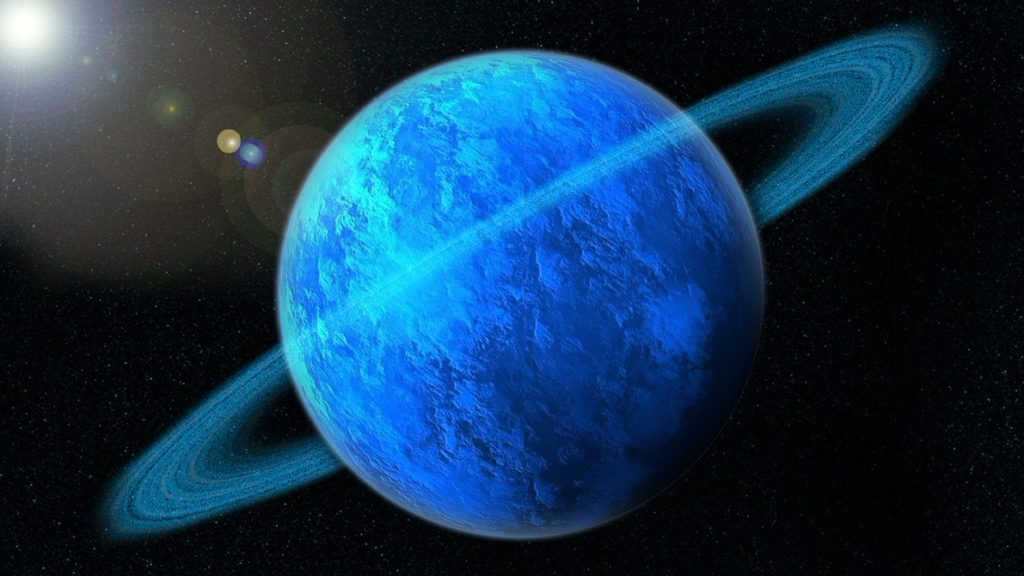
Uranus: A Fascinating Planet for Kids
Let’s explore Uranus, the seventh planet from the Sun, in a way that is fun and engaging for children. We can use a yula (a toy Earth) and a ball (representing Uranus) to demonstrate how these planets move in space.
Children will be amazed to learn that Uranus, a gas giant, appears as a blue star when observed from Earth. Through a telescope, they can even see its large moons.
The planet’s distinctive blue color is caused by the presence of methane in its atmosphere.
This is the initial planet that was discovered during modern history. It was first spotted by English astronomer William Herschel in the year 1781, with the assistance of a telescope. Initially, Herschel believed that he was observing a comet.
The planet has been given two different names. The first name was in tribute to the English king, known as Star George. However, it was later renamed Uranus, in honor of the sky god.
In terms of its magnitude, Uranus is the third largest planet, the fourth heaviest, and the seventh furthest from the Sun.
While it orbits the Sun, Uranus has a unique orientation, as its axis is tilted 98 degrees in relation to the orbital plane. Additionally, Uranus rotates in a clockwise direction, contrary to its orbital motion.
It takes Uranus approximately 84 years to complete one orbit around the Sun, with each season lasting for 21 years.
Furthermore, Uranus has a day length of 17 hours and 14 minutes.
Similar to Saturn, Uranus possesses its own set of rings, consisting of a total of 13 rings. These rings are not easily visible as they are composed of a combination of stone particles, ice, and dark matter. Each ring varies in width and distance from the planet. The central ring measures approximately 100 kilometers wide, while the other rings range in width from a few kilometers. The rings are positioned at varying distances from the center, with the outermost rings located as far as 100,000 kilometers away.
In 2020, scientists are planning to launch a new space mission to explore Uranus, which will undoubtedly lead to exciting discoveries.
Stay tuned for updates on this fascinating mission.
To be continued.
Uranus, the seventh planet from the Sun, has an orbital period of 84 years, completing a full revolution around our star.
Compared to Earth, Uranus is four times larger and fourteen and a half times more massive.
One unique characteristic of Uranus is its tilted position in the solar system. The planet’s axis is inclined at an angle greater than ninety degrees to its orbit, making it the only planet to rotate in such a recumbent manner. This tilt may be the result of a historic collision with a massive asteroid.
The phenomenon of changing seasons is incredibly fascinating on the planet Uranus. At the South Pole, summer lasts for a whopping 42 Earth years, during which the sun never sets. Following the prolonged summer, the next 42 years are dominated by a harsh winter, characterized by a constant night and bone-chilling temperatures of -224 degrees Celsius. However, during the transitional periods of fall and spring, the sun makes a brief appearance in the sky every nine hours.
One of the most astonishing aspects of Uranus is the tremendous speed of its hurricane winds, which can reach up to two thousand kilometers per hour (2000 km/h). This speed is significantly greater than that of hurricanes on Earth, making Uranus a true force to be reckoned with. To put it into perspective, Hurricane Allen, which struck Earth in August 1980, had wind speeds reaching a maximum of 310 kilometers per hour. In comparison, the wind speed on Uranus reaches a staggering 2000 kilometers per hour, making it a truly formidable force of nature. Meanwhile, Earth’s wind speed is relatively modest at 310 kilometers per hour.
Another intriguing feature of Uranus is its impressive collection of 27 satellites, which consist of a mixture of rocks and ice. These satellites orbit around the planet, adding to its mysterious and captivating nature.
Lastly, Uranus boasts a ring system consisting of 13 rings, each with a color reminiscent of coal. These rings add to the planet’s unique and enigmatic beauty.
Regarding the topic: systematic advancements, demonstrations, and records

"Sun, Earth and other planets"
In the preparatory group lesson, children are introduced to the Earth, its moon Luna, and the rest of the planets in the solar system. They learn about the planets’ positions in the solar system and engage in activities that demonstrate the concept of day and night. The lesson also includes games and physical exercises for the children.

A prospectus for the course “The Sun and the planets” classes.
A course description for the advanced level group.
Engaging demonstration for senior preschool children in the speech group “Sun and Planets”
This interactive demonstration is designed to reinforce the knowledge that the children have already gained about the topic “Space: Our Solar System.”

Summary of the lecture on the advancement of cognition in the advanced division titled “The Sun, Earth, and alternative celestial bodies”.
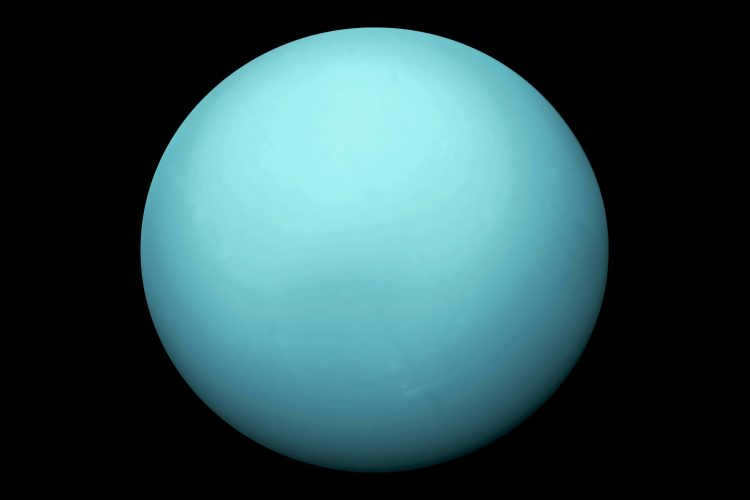
- Planets
Uranus is the seventh planet in our solar system, and it was only recently discovered and has been poorly studied. It is the third largest planet in terms of distance from the Sun, and the fourth largest in terms of mass. This planet was initially mistaken for a star by humans, which is why it remains a great mystery to us. Uranus is often referred to as “Huge Uranus” due to its size – its equatorial diameter is four times larger than Earth’s, and its mass is 14 times greater. Additionally, Uranus appears blue from Earth because of the abundance of methane in its atmosphere.
Uranus is classified as a gas giant. It has an equatorial radius of around 25,560 kilometers and a polar radius of 24,973 kilometers. The planet is spherical in shape, but it is slightly flattened at the poles.
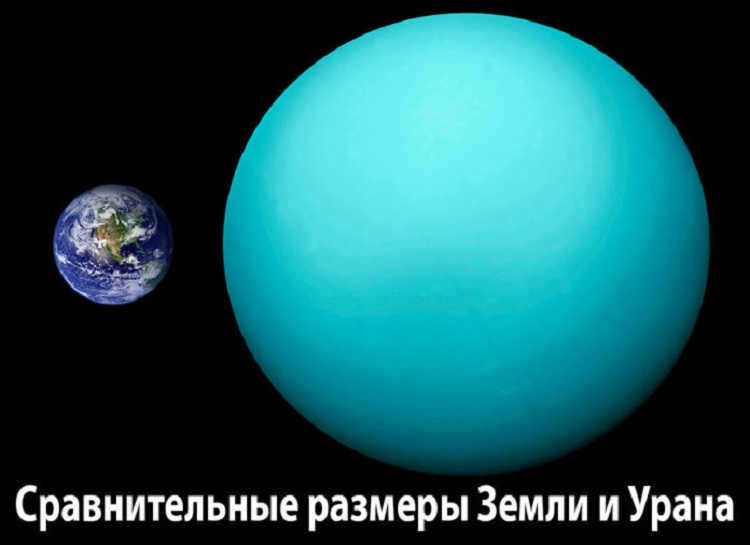
One of the distinct features of Uranus is its axial tilt, which is nearly 98 degrees in relation to the orbital plane. Unlike most other planets, including Earth, Uranus rotates clockwise around its axis. Earth, on the other hand, has an axial tilt of 66 degrees and rotates counterclockwise from west to east. This means that Uranus orbits on its side, resembling a rolling ball, and rotates from east to west.
Discovery History
The initial mention of the planet can be traced back to the observations made by the English scientist John Flemsteed. In 1690, Flemsteed recorded this celestial object multiple times, but only noted it as the 34th star in the Taurus constellation. Moving forward to the 18th century, the French astronomer Le Monier observed the planet for nearly two decades, still regarding it as a star.
Uranus holds the distinction of being the first planet discovered using a telescope. A model of the telescope used is on display at the Bath Museum in the UK.
Initially, William Herschel believed Uranus to be a comet. Through his examination of the newly discovered celestial body using various lenses, Herschel deduced that it was not a star due to its changing size as it approached. However, he could not find the tell-tale signs of a comet, such as a tail or head.
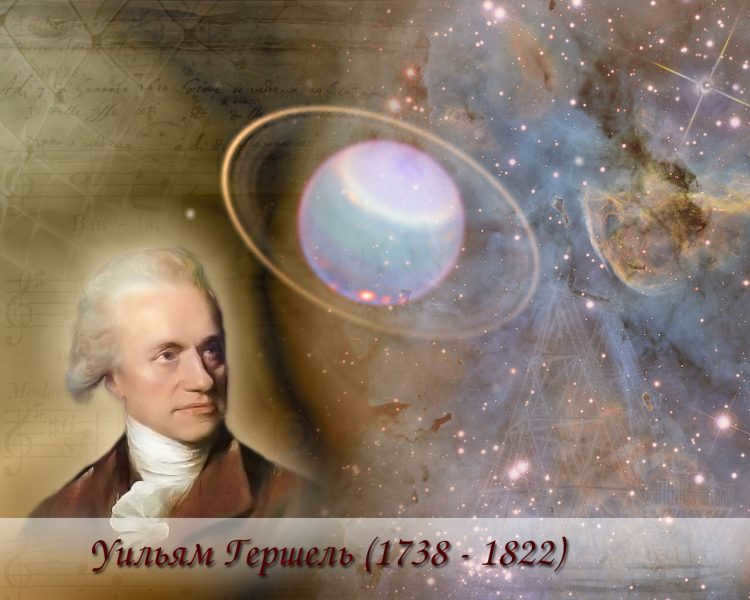
Meanwhile, a Russian astronomer named A. I. Lexel determined the distance between the Earth and this celestial object, which turned out to be more than 18 times the distance from the Sun to our planet. No comet had ever been observed at such a great distance before. The German scientist Bode suggested that this object should be classified as a planet, a suggestion that was ultimately confirmed by Herschel himself in 1783.
As a result of this discovery, Herschel was awarded a lifetime scholarship of 200 thousand pounds and was even invited to move to Windsor Palace. The King of England was so impressed by his work that he wanted to personally observe the stars through the scientist’s telescopes.
Perception
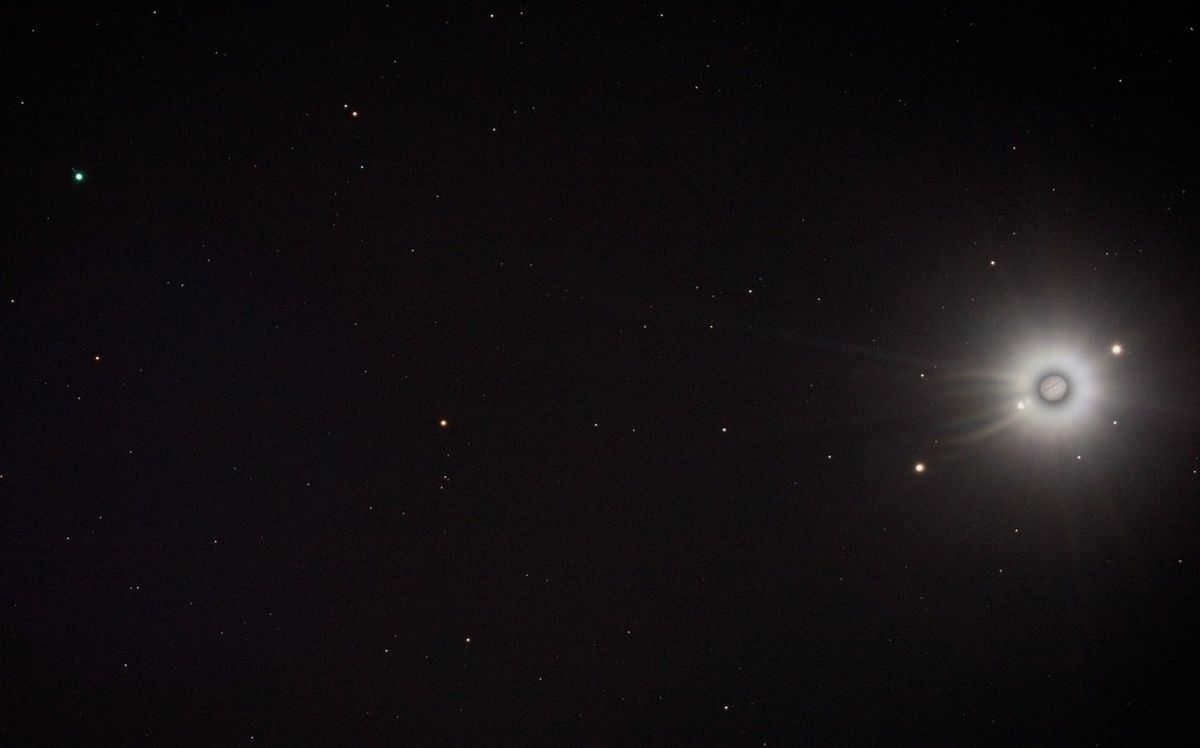
Between 1995 and 2006, the brightness of Uranus varied from +5.6 m to +5.9 m, meaning that the planet could be seen with the naked eye, albeit at its faintest. the planet could be seen with the naked eye, albeit at its faintest. . The size of Uranus appeared to be between 3.4 and 3.7 angular seconds (in comparison, Saturn: 16-20 angular seconds, Jupiter: 32-45 angular seconds). On clear, dark nights, Uranus can be seen with the naked eye when it is in opposition, and even in urban areas, it can be observed with binoculars.
When using amateur telescopes that are quite large, ranging from 15 to 23 cm in objective lens diameter, Uranus appears as a disk with a pale blue color and a noticeable darkening at the outer edge. However, when using even larger telescopes with a lens diameter exceeding 25 cm, it becomes possible to discern clouds on Uranus and even see its prominent satellites, such as Titania and Oberon.
Composition of Uranus
There are various theories proposed by scientists regarding the internal composition of Uranus, ranging from a two-tier model to the more widely accepted three-tier model. However, the standard model is generally accepted as the fundamental understanding of its structure.
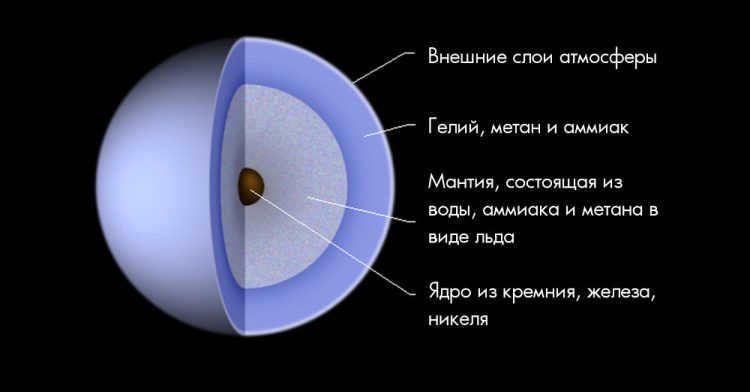
The gas envelope on Uranus that is farthest from the central part of the planet is referred to as the atmosphere. The Voyager 2 spacecraft was instrumental in gathering this information and capturing images of the atmospheric spectrum.
Located approximately 300 kilometers from the outer layer, the atmosphere shares a similar composition to other gas giants, comprising of over 70% hydrogen, 25% helium, and approximately 2% methane.
On the planet Uranus, the maximum recorded wind speed reaches an astounding 240 meters per second. With a temperature minimum of minus 224 degrees, Uranus holds the title for the coldest planet in our solar system.
Underneath the atmosphere lies the mantle. The mantle is a layer that is conventionally defined as the region with a pressure of 1 bar. It is believed that the mantle consists primarily of a mixture of water-dissolved ammonia and methane, creating a dense and highly conductive ocean. This ocean is often referred to as the ammonia-water ocean, which is why Uranus is classified as an ice giant. Unlike its counterparts, Europa and Saturn, Uranus no longer has a layer of metallic hydrogen. As we move closer to the planet’s center, both pressure and temperature increase.
At the very core of Uranus, we find an exceptionally dense and hot core. It is estimated that the core’s temperature can reach up to 7,000 K, with a pressure of up to 6 million atmospheres. The core’s size accounts for about 20% of the planet’s radius and is believed to be composed of rock and iron. Its density can reach up to 9 g/cm³.
Similar to other planets, Uranus possesses a magnetosphere that contains charged particles including protons, electrons, and ions.
The magnet field of Uranus
The magnet field of our Uranus exhibits various unique characteristics that distinguish it from other planets. These peculiarities are likely linked to its rotation patterns and the absence of an internal energy source.
- The first distinctive feature is the displacement of the planet’s magnetic axis from its center by one third of its radius, resulting in a 60-degree angle.
- The second feature is the fluctuating intensity of the magnetic fields.
- Thirdly, there are multiple pairs of magnetic poles, with two additional weaker ones in addition to the main two.
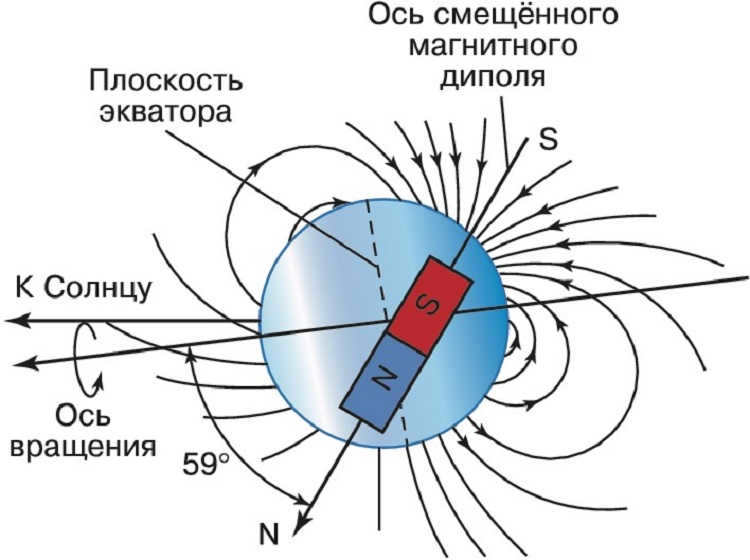
The unique magnetic field of Uranus is not generated in its core like other planets, but in the upper layer of its water ammonia ocean, which has high electrical conductivity. This is where the formation of magnetic field lines begins, extending far beyond the planet. However, the magnetic flux of Uranus is constrained by the solar wind from the Sun’s side, preventing it from spreading widely.
On the other hand, the escape route for magnetic waves is unobstructed, suggesting that they should propagate over long distances in outer space. However, this is not the case for Uranus due to the tilt of its rotational axis in relation to the magnetic field.
As the planet spins, it is discovered that its magnetic field lines intertwine in a spiral tail that can extend up to 10 million kilometers in the opposite direction of the Sun.
The rings of Uranus
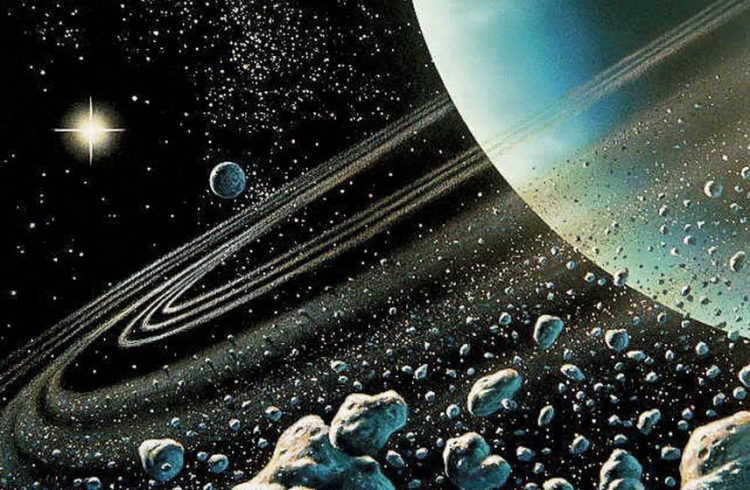
While most people are familiar with Saturn’s famous rings, not many have heard about the rings of Uranus. These rings were first observed by American astronomer James Eliot in March 1977.
In 1986, the Voyager 2 spacecraft discovered an additional two rings, and two more were found using the powerful Hubble telescope in 2005.
Currently, scientists are studying a total of thirteen rings around the planet Uranus.
The positioning of the rings commences at around 40,000 – 50,000 kilometers away. However, it is worth noting that the two outer rings are situated at a distance that is twice as vast.
The precise mechanism that keeps the rings confined within their boundaries remains uncertain, but researchers are actively investigating this enigma.
The Moons of Uranus
At present, Uranus boasts 27 satellites, although there is a possibility that there are numerous other tiny and undetected satellites.
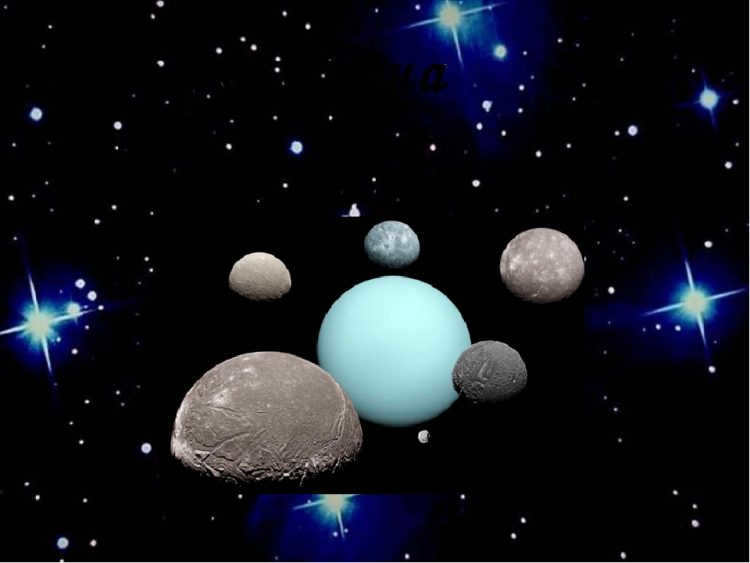
Uranus possesses a multitude of moons. However, a few of them were initially captured by Uranus’ gravitational pull and subsequently disintegrated. The largest moon is known as Titania, while Oberon is slightly smaller. Both of these moons were first observed by Herschel. Following them are Umbriel, Ariel, and Miranda. Out of these moons, only Miranda is composed entirely of ice, while the others are a combination of ice and rock. Some of the moons orbit within Uranus’ rings, earning them the designation of inner satellites.
All of Uranus’ moons have been given names inspired by characters from the works of William Shakespeare. This naming convention serves as a tribute to the English discoverer of the planet.
Discovering Uranus
Following the detection of Uranus, investigating this celestial body posed numerous challenges due to its immense distance from Earth. Researchers were only able to observe its largest moons and theorize about the presence of rings or an atmosphere.
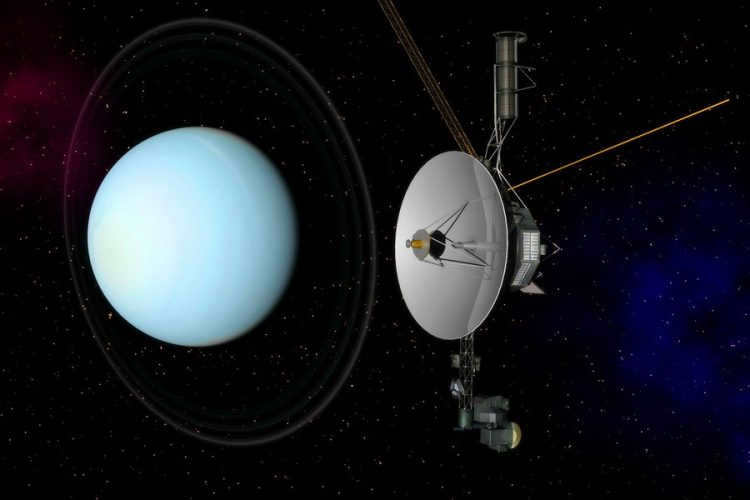
The arrival of the Voyager 2 probe in 1986 marked a significant milestone in our understanding of Uranus. Launched in 1977, this groundbreaking mission provided us with the first-ever images of the planet’s enigmatic surface, which was barely visible through its thick cloud cover. In addition to capturing these images, Voyager 2 was tasked with studying Uranus’s magnetic field, observing its atmosphere, and analyzing its weather patterns. During its mission, the probe also made several remarkable discoveries, including the identification of two previously unknown rings and the capture of detailed images of the planet’s largest moons. While the probe was unable to capture images of the entire planet due to its limited field of view, it provided invaluable insights into Uranus’s mysterious nature.
Additional valuable information was obtained through observations made by the Hubble radio telescope back in the 1990s. It was the Hubble radio telescope that initially documented the atmospheric vortices of Uranus, discovered the presence of a “dark spot” in its clouds, and identified asymmetry in the planet’s structure.
These significant findings have paved the way for a team of 168 scientists to embark on a new endeavor. NASA is currently in the process of preparing for the launch of the Uranus Pathfinder mission. The spacecraft will initiate its journey from Earth and ultimately reach Uranus, where it will traverse through the planet’s atmosphere and collect numerous samples. The project entails an extensive exploration of the outer regions of the solar system, with a specific focus on the vast expanse beyond Uranus. The anticipated launch of the spacecraft is scheduled for the 2020s. The mission itself could span over a period of 15 years, with nearly 10 years dedicated to the journey towards the enigmatic blue planet.
In society
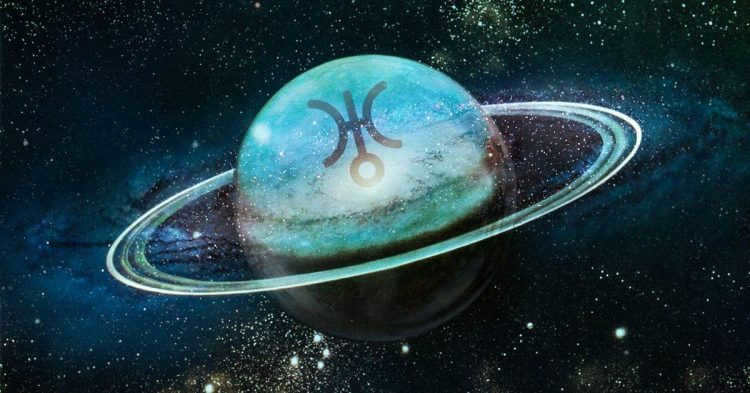
Just 3 years after its discovery, Uranus was the inspiration for a humorous pamphlet. Since then, numerous science fiction authors including Stanley Weinbaum, Ramsey Campbell, Larry Niven, Sergei Pavlov, Georgy Gurevich, and others have incorporated Uranus into their stories.
Uranus has been featured in the movie “Journey to the Seventh Planet” as well as in select episodes of “Space Patrol” and “Dalek Master Plan” from the television series “Doctor Who”. Additionally, the planet is referenced in various comic books, anime, and computer games.
In the realm of astrology, Uranus is considered the ruling planet of the Aquarius zodiac sign.
Mysteries
Lateral rotation
This is possibly the largest enigma of the planet. What is the reason for its unusual axial tilt? One hypothesis suggests that during the early stages of the solar system’s formation, Uranus experienced a collision with a protoplanet, causing it to be tilted on its side and altering its magnetic axis. This collision also resulted in a decrease in the planet’s heat flow.
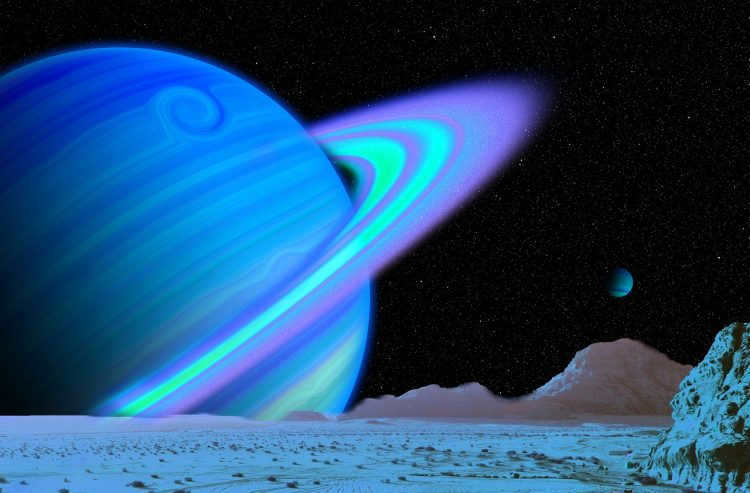
The Chevron Enigma
A baffling phenomenon surrounds the enigmatic moon of Uranus, Miranda. Analysis of satellite imagery has uncovered an anomaly – a perfectly shaped area that has somehow managed to evade meteorite impacts. This peculiar patch, measuring 140×200 km, has been aptly dubbed the “Chevron”. Its origin remains shrouded in mystery.
- Out of all the giant planets in the solar system, Uranus is the least massive.
- For 42 Earth years, each pole of Uranus is in darkness, and then it is bathed in sunlight for the next 42 years.
- When the skies are clear and dark, Uranus can be seen with the naked eye when it is in opposition. Even in city conditions, it can be observed with binoculars.
- Through a telescope, Uranus was the first planet to be discovered.
- Unlike the other major planets in the solar system, Uranus gets its name from Greek mythology instead of Roman mythology.
- Among the satellite systems of the gas giants, the satellite system of Uranus is the least massive. Even if you combine the masses of the five largest satellites, it wouldn’t be half the mass of Triton, a satellite of Neptune.
- The satellites of Uranus were named after characters from the works of William Shakespeare and Alexander Pope.
- Researchers have conducted experiments that prove the existence of diamond skies on Neptune and Uranus.

